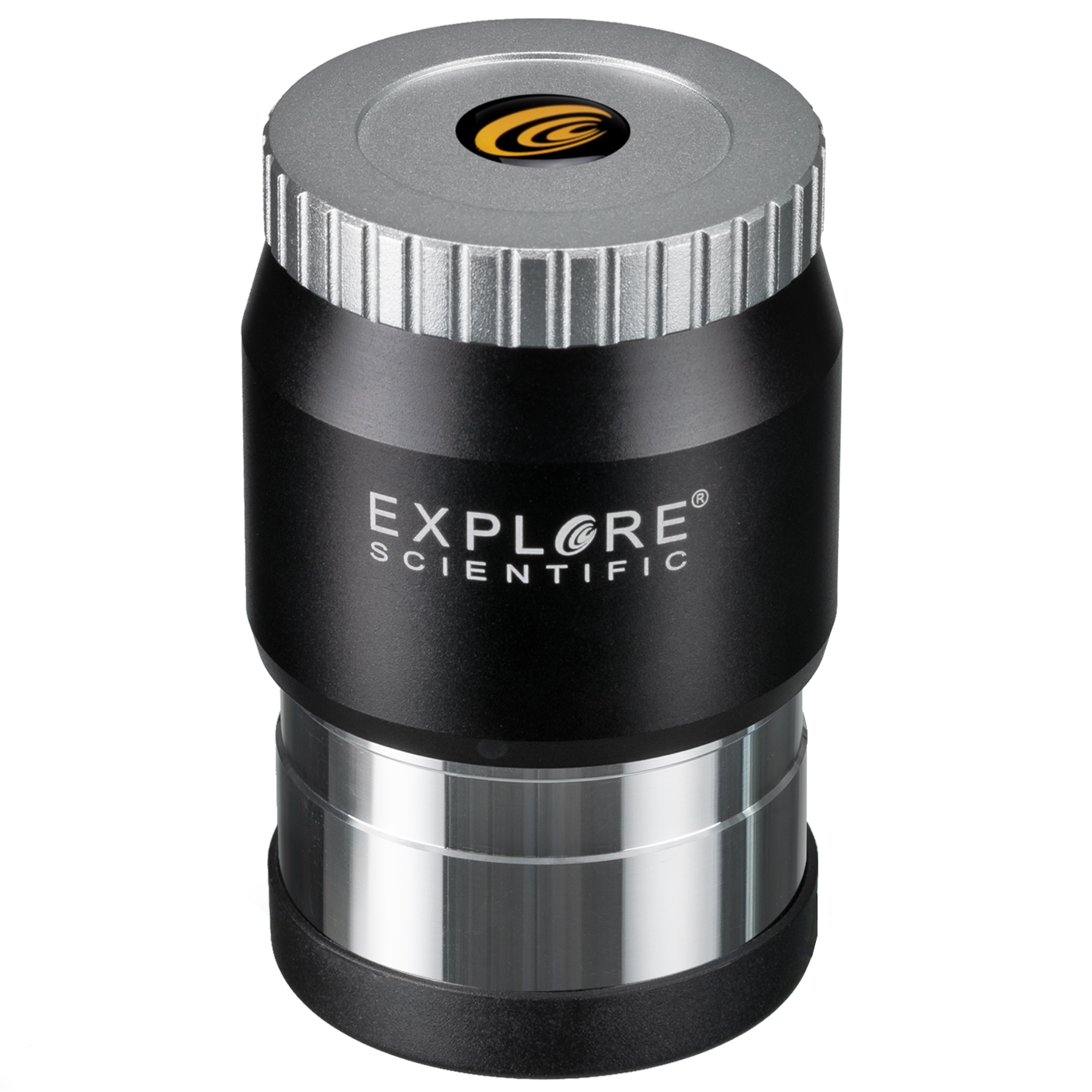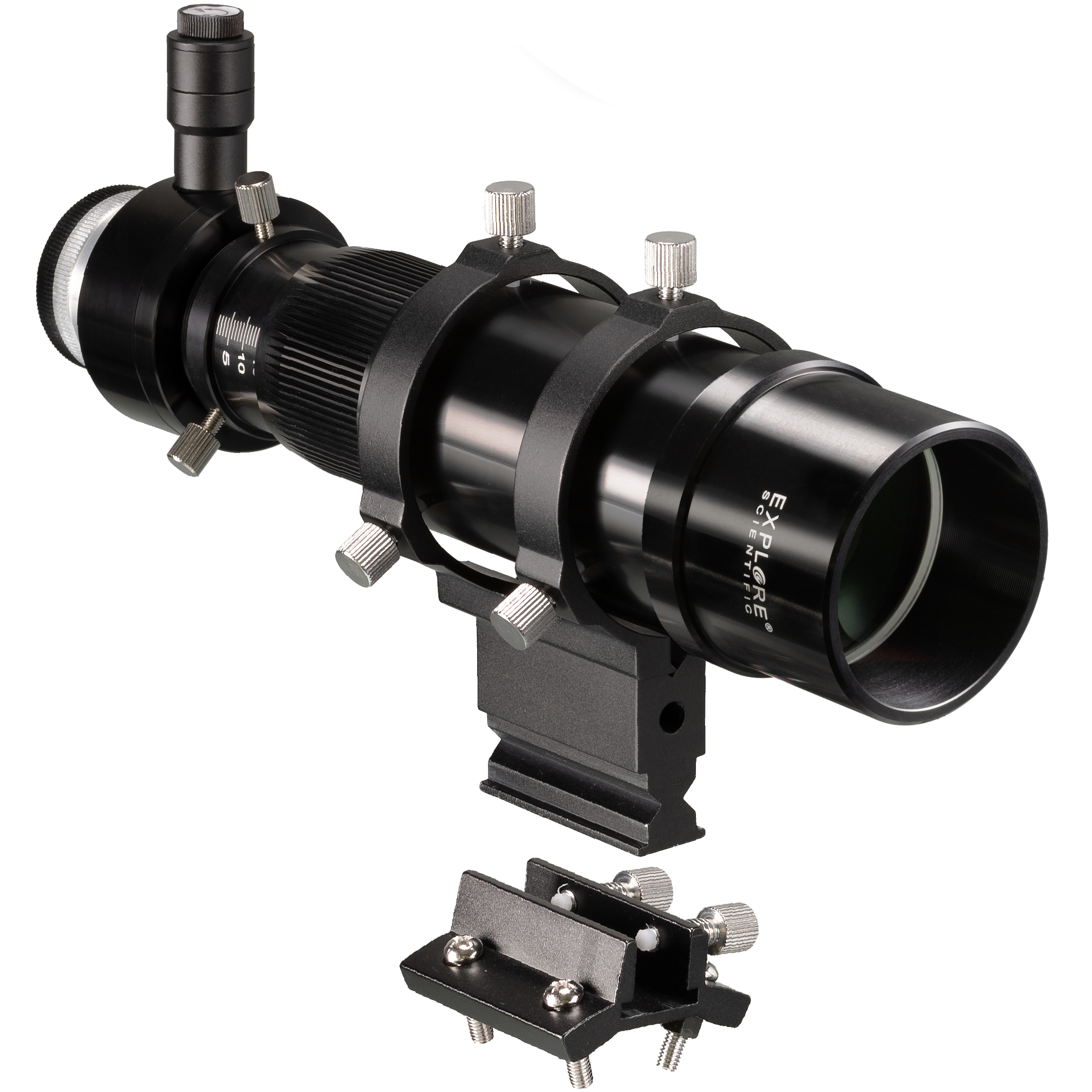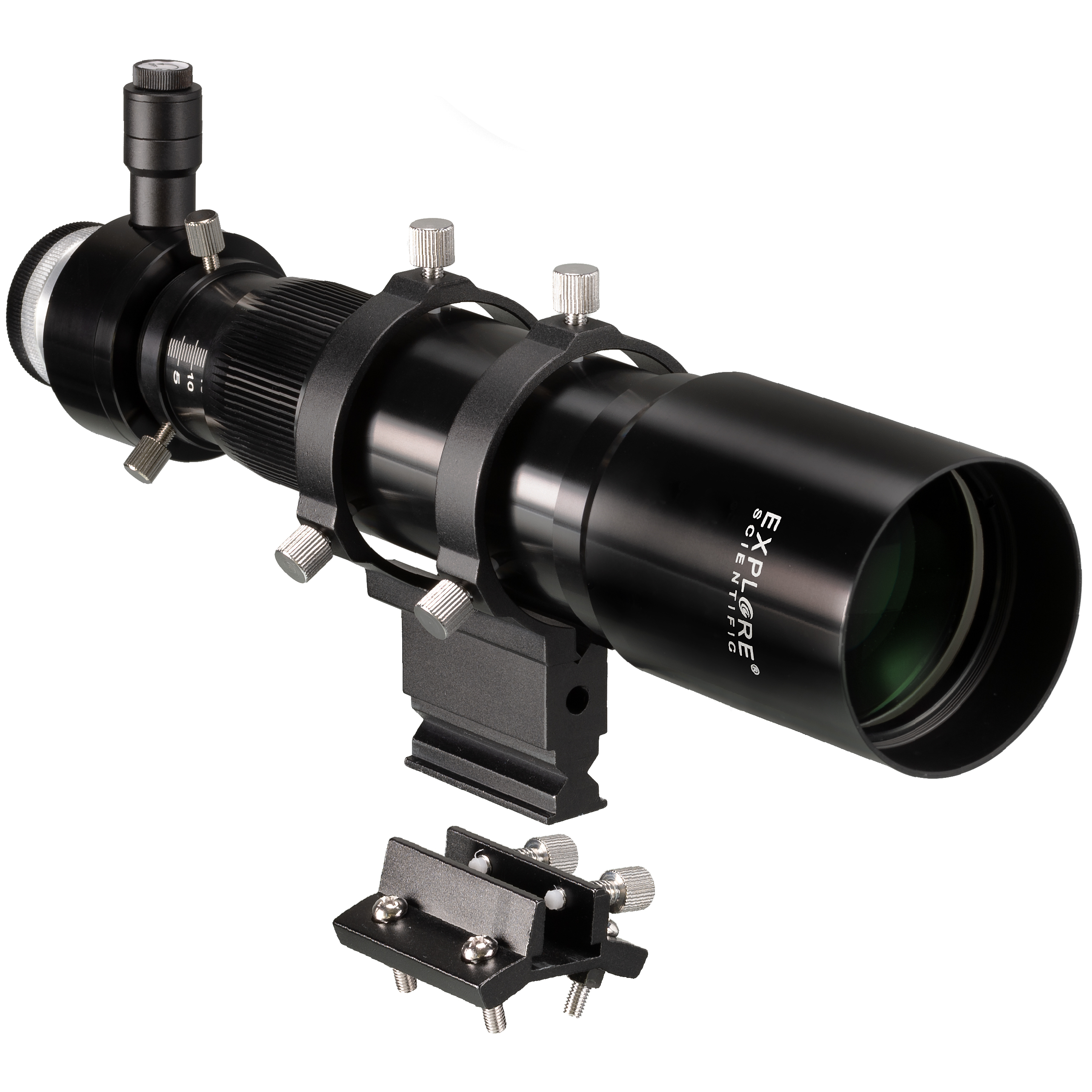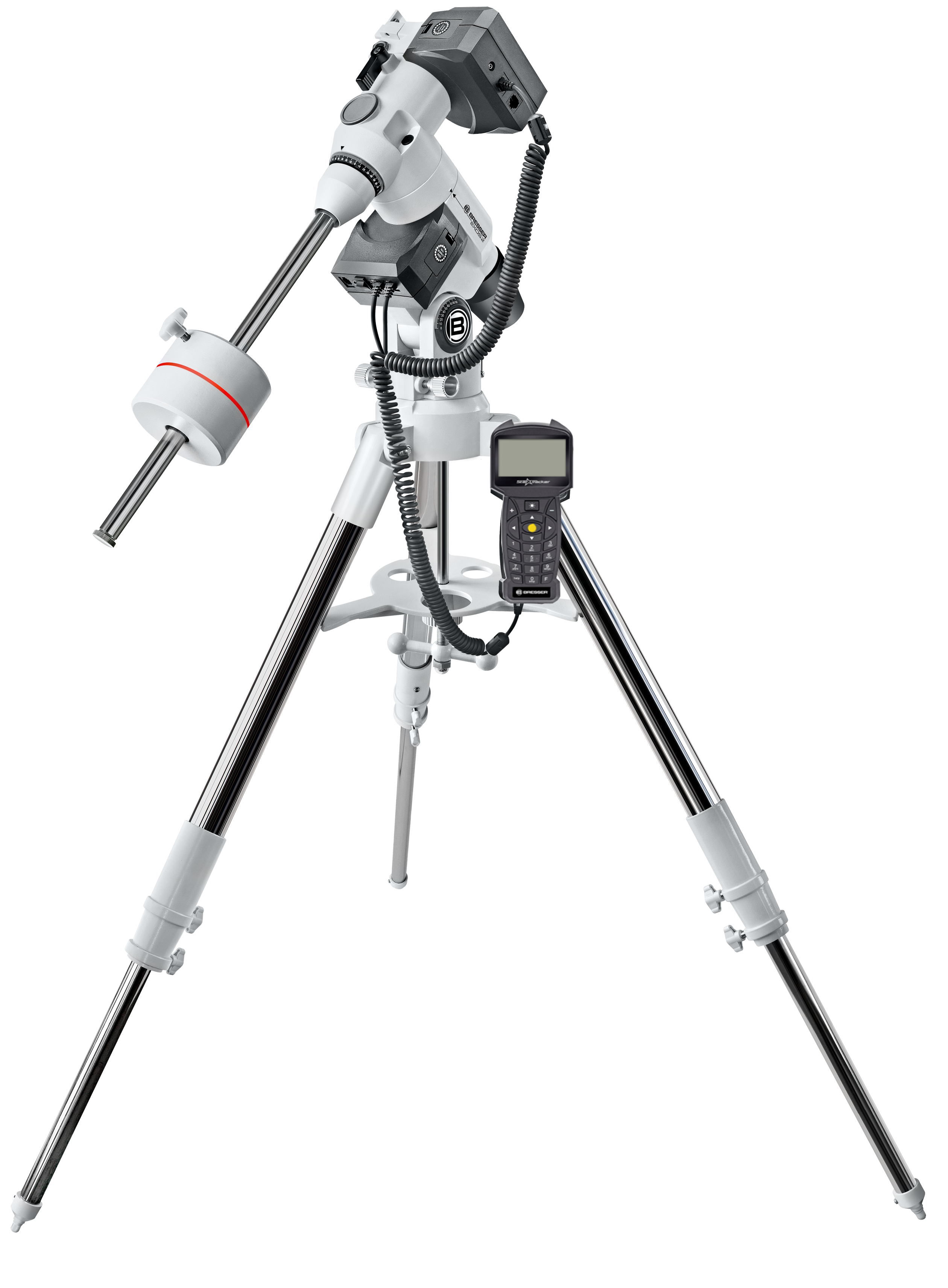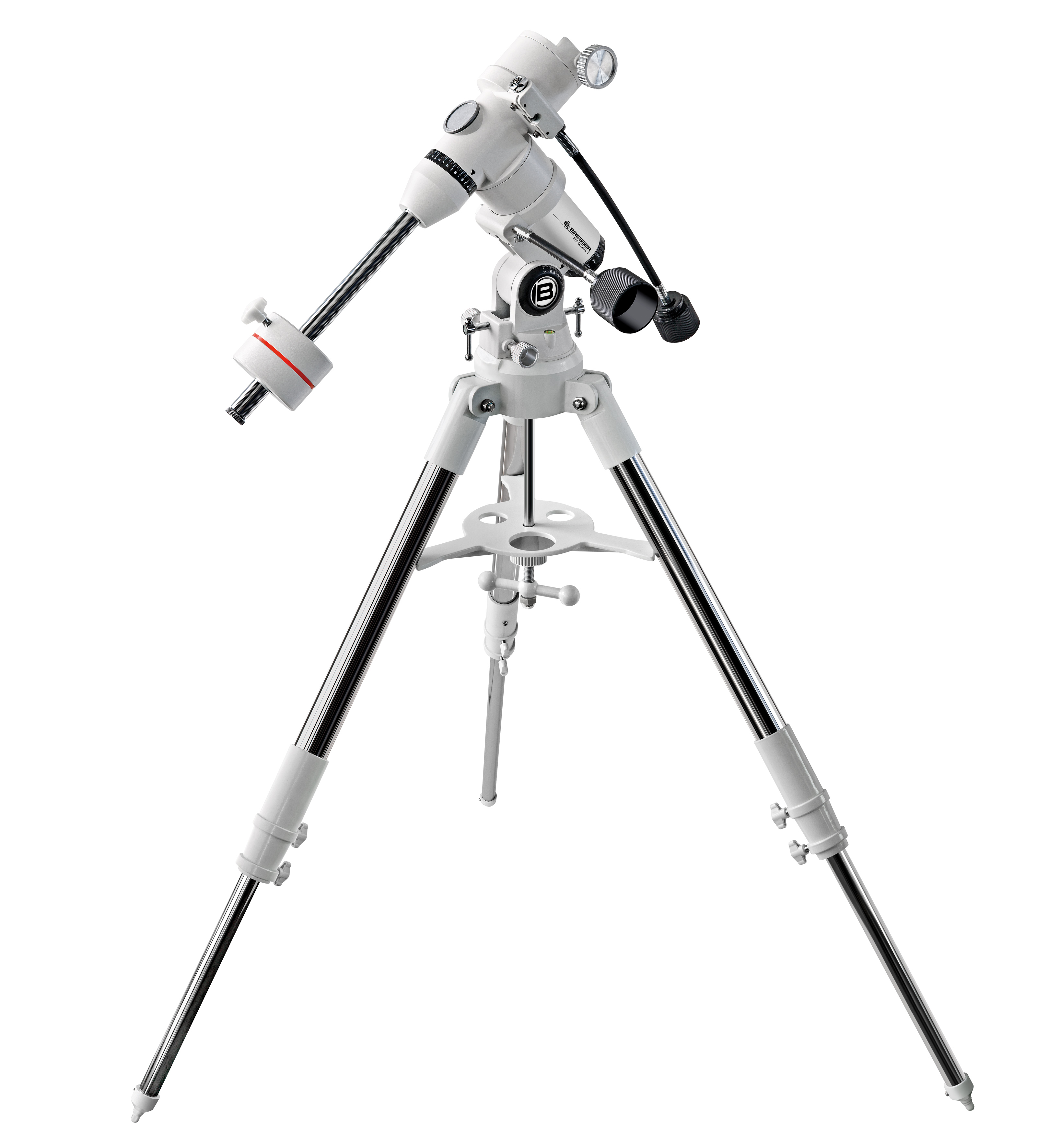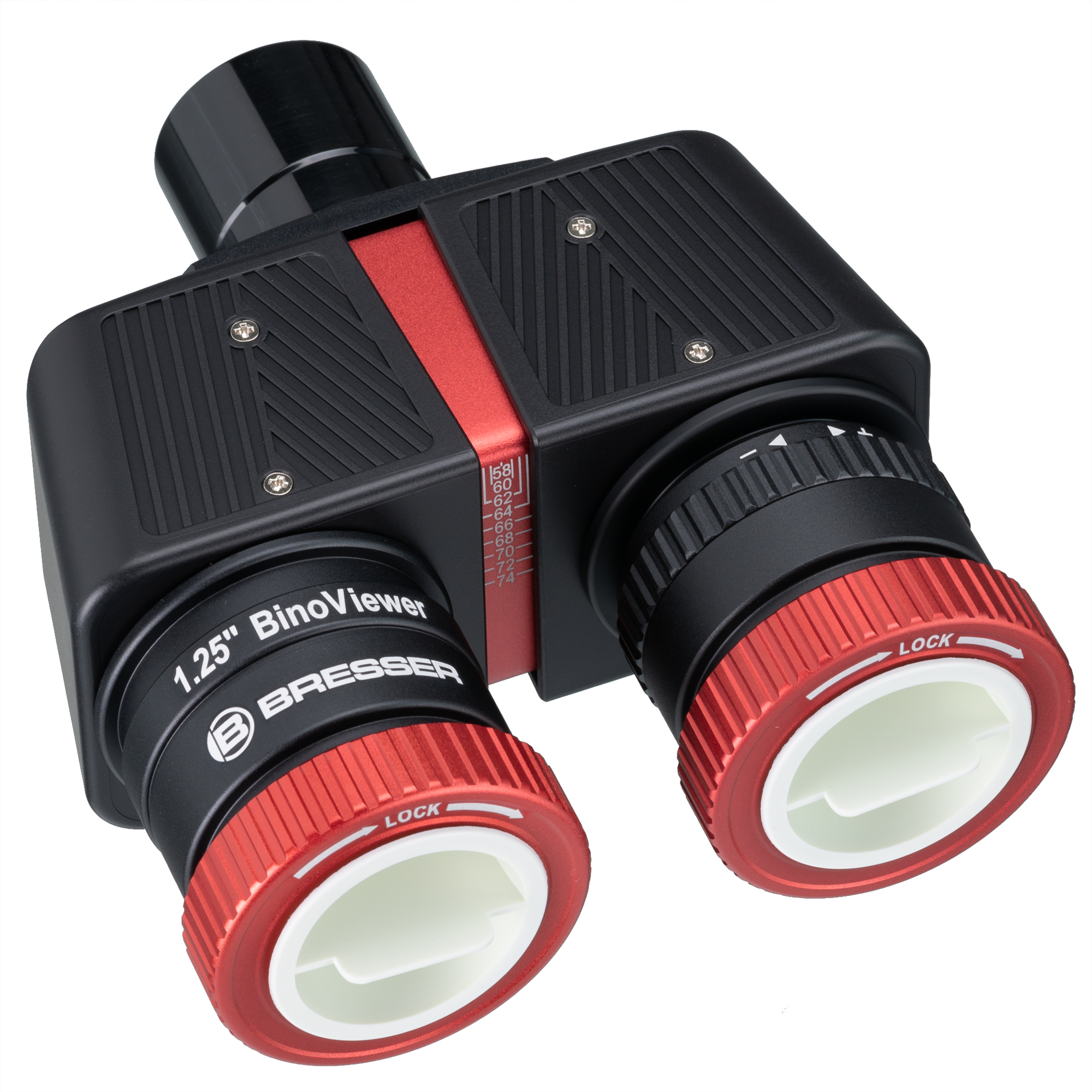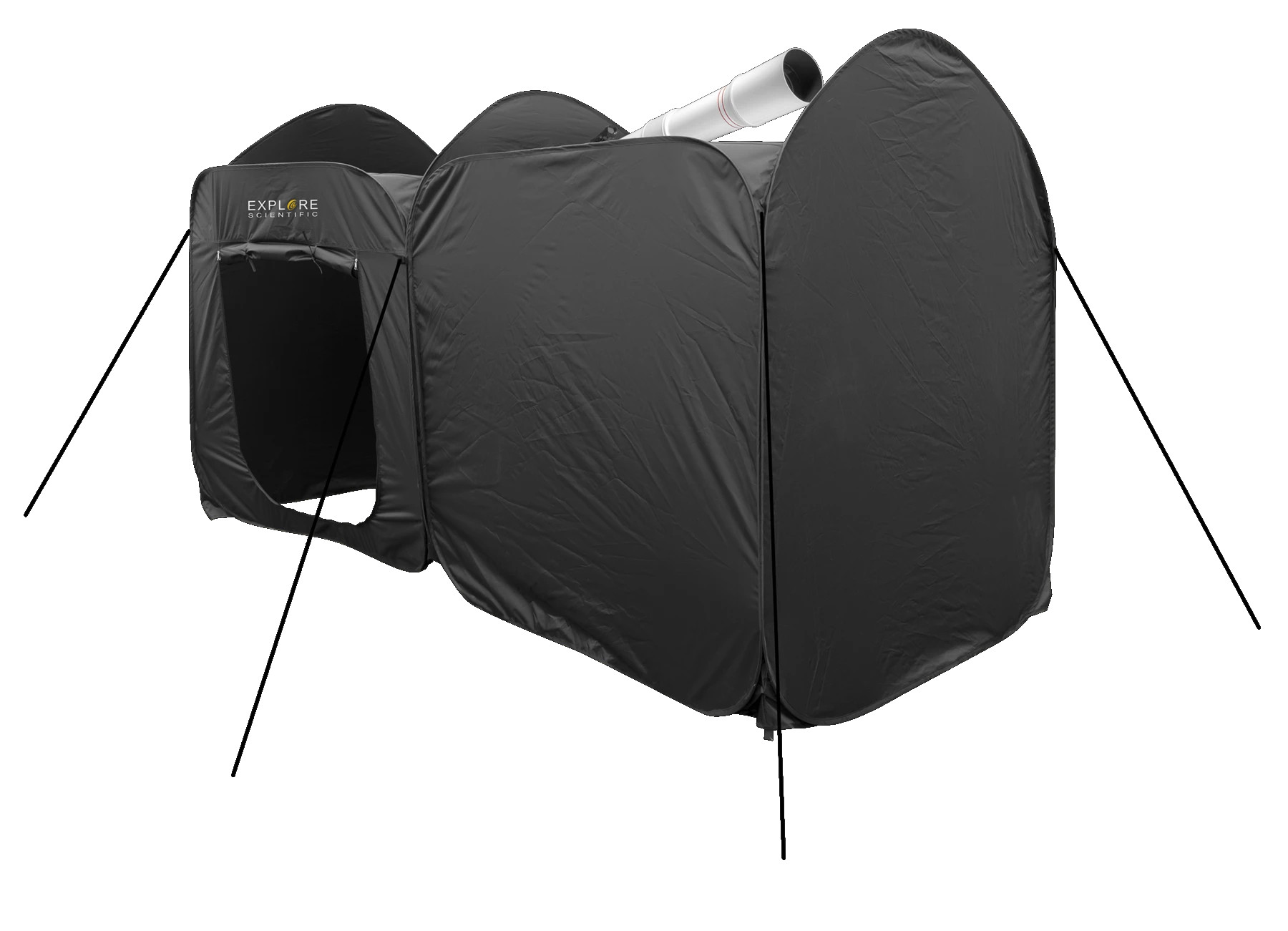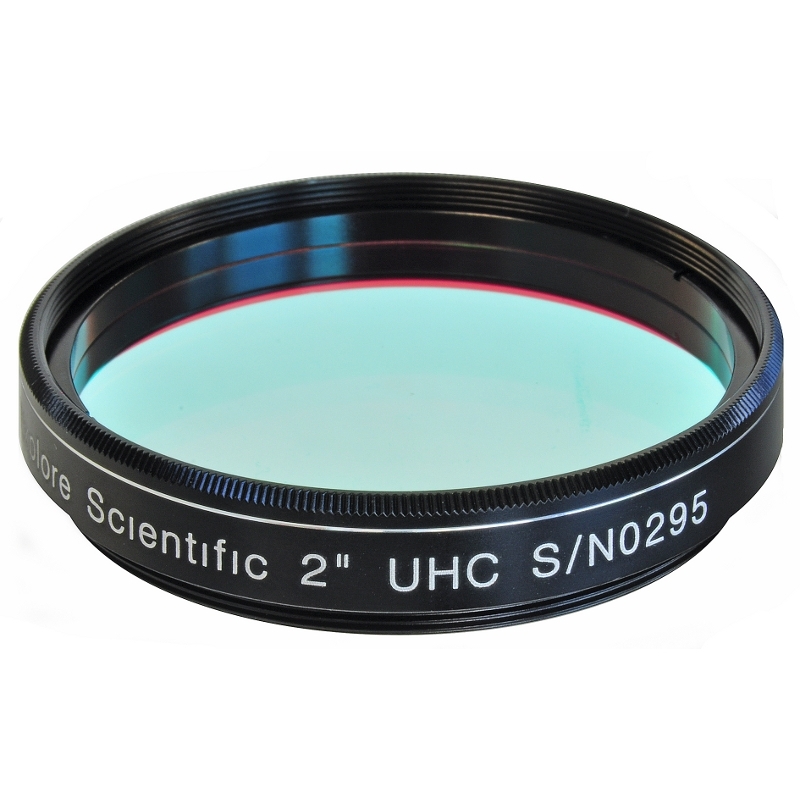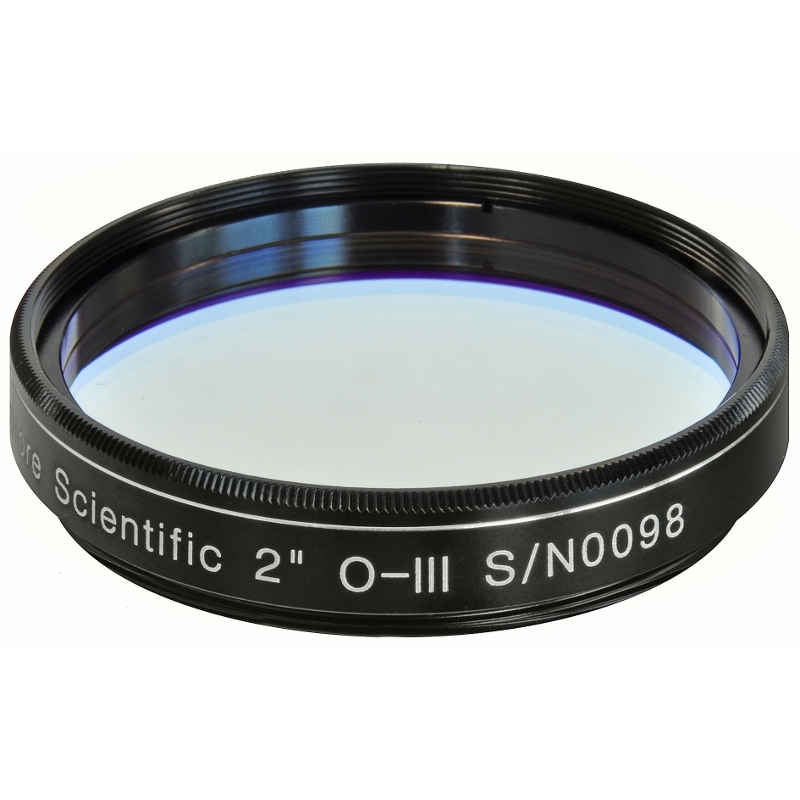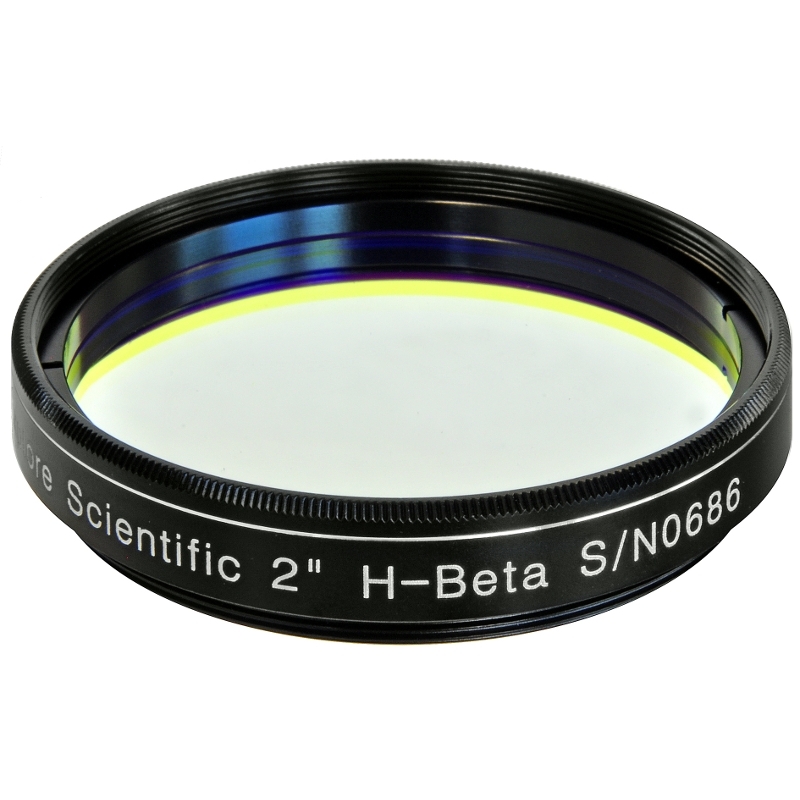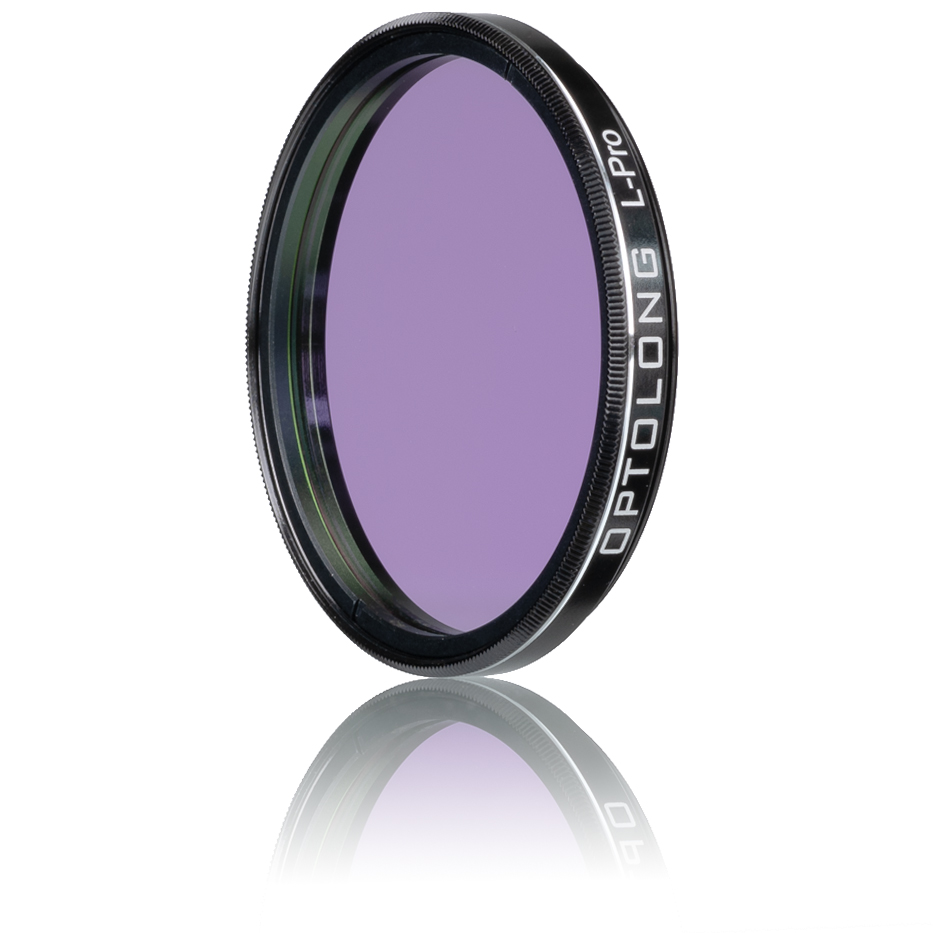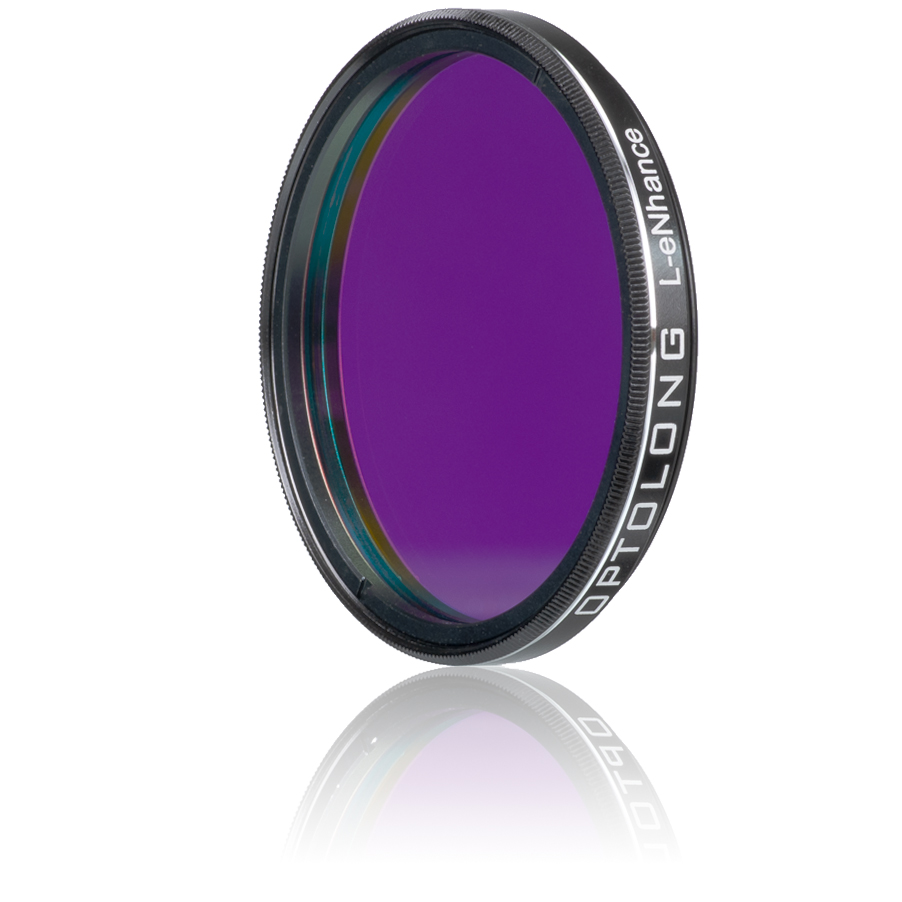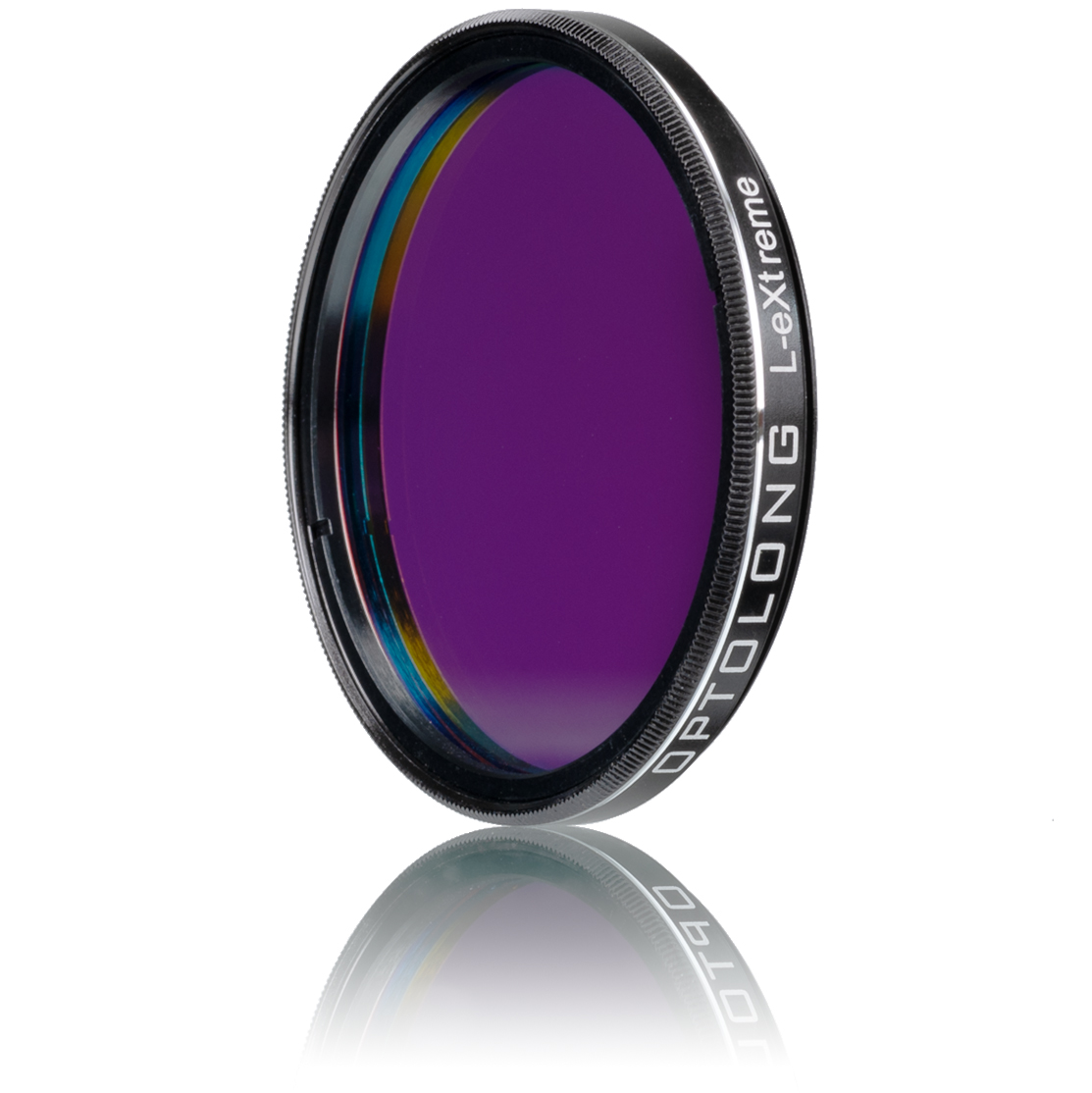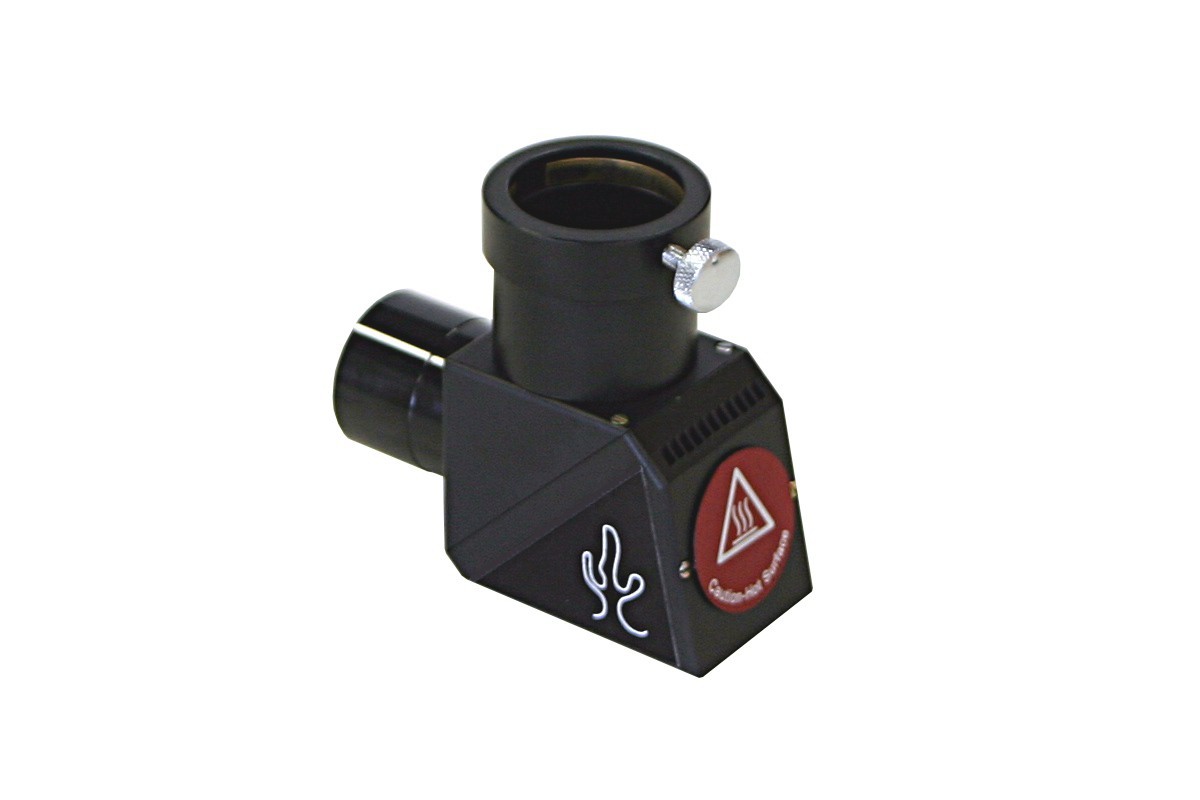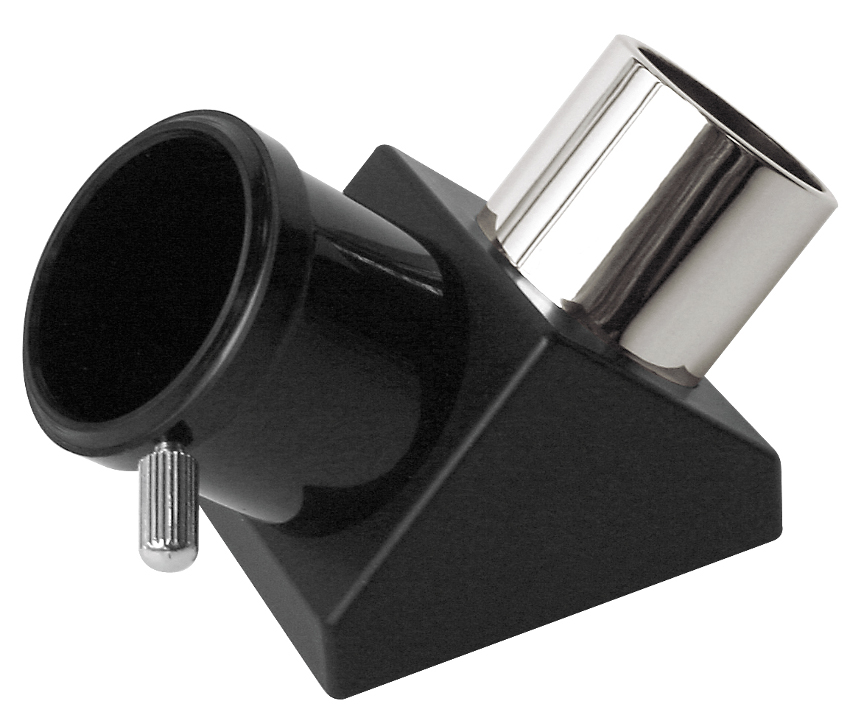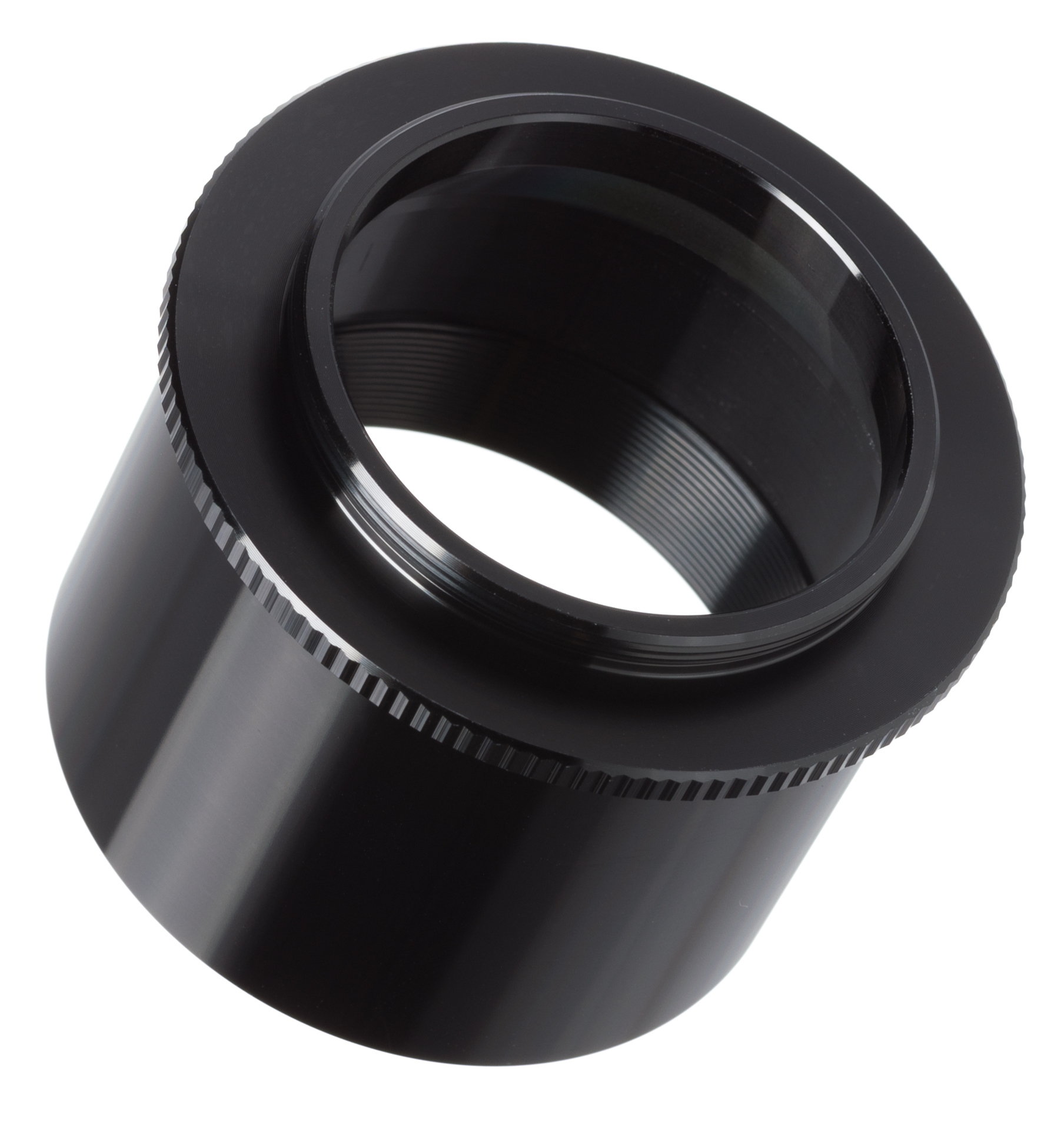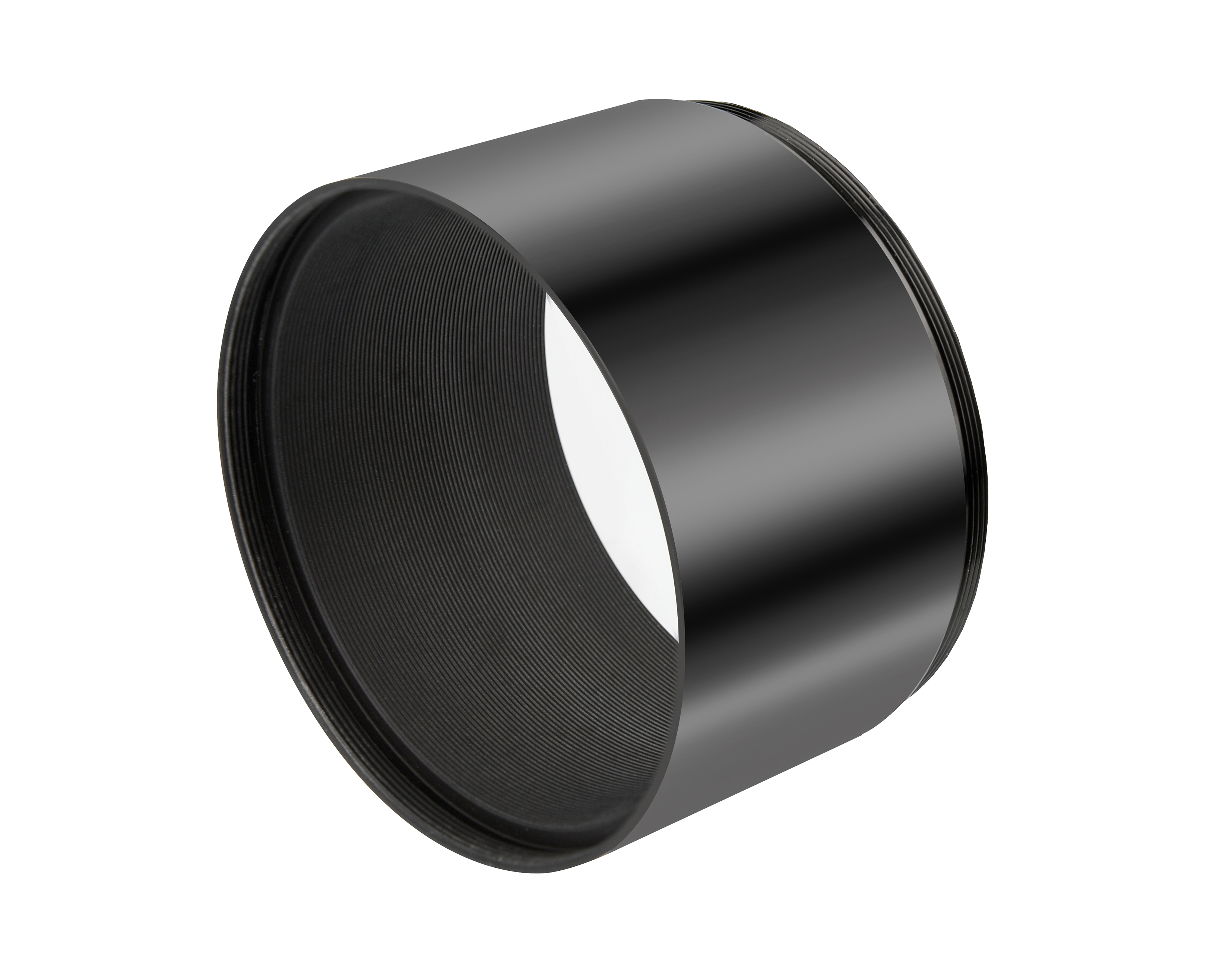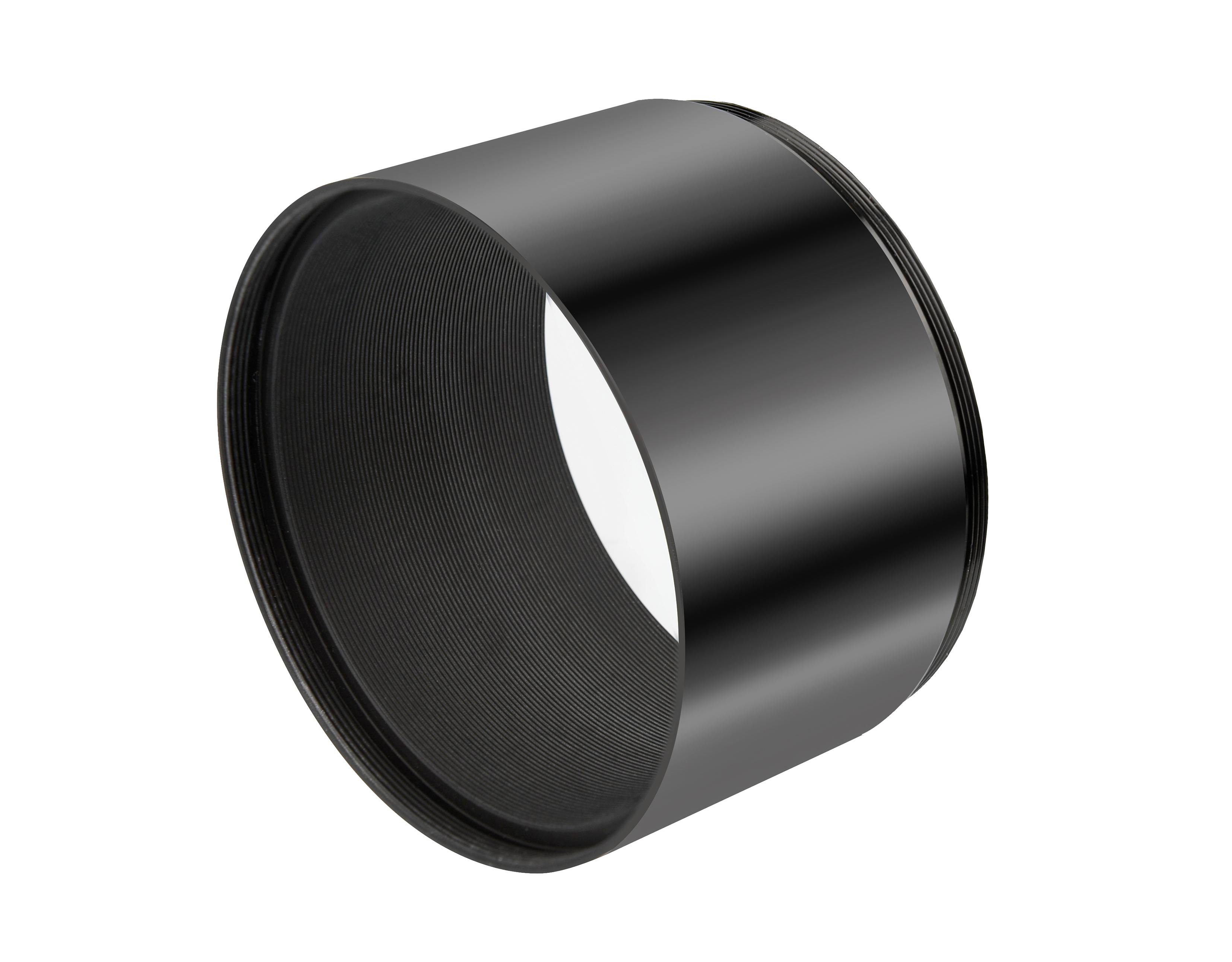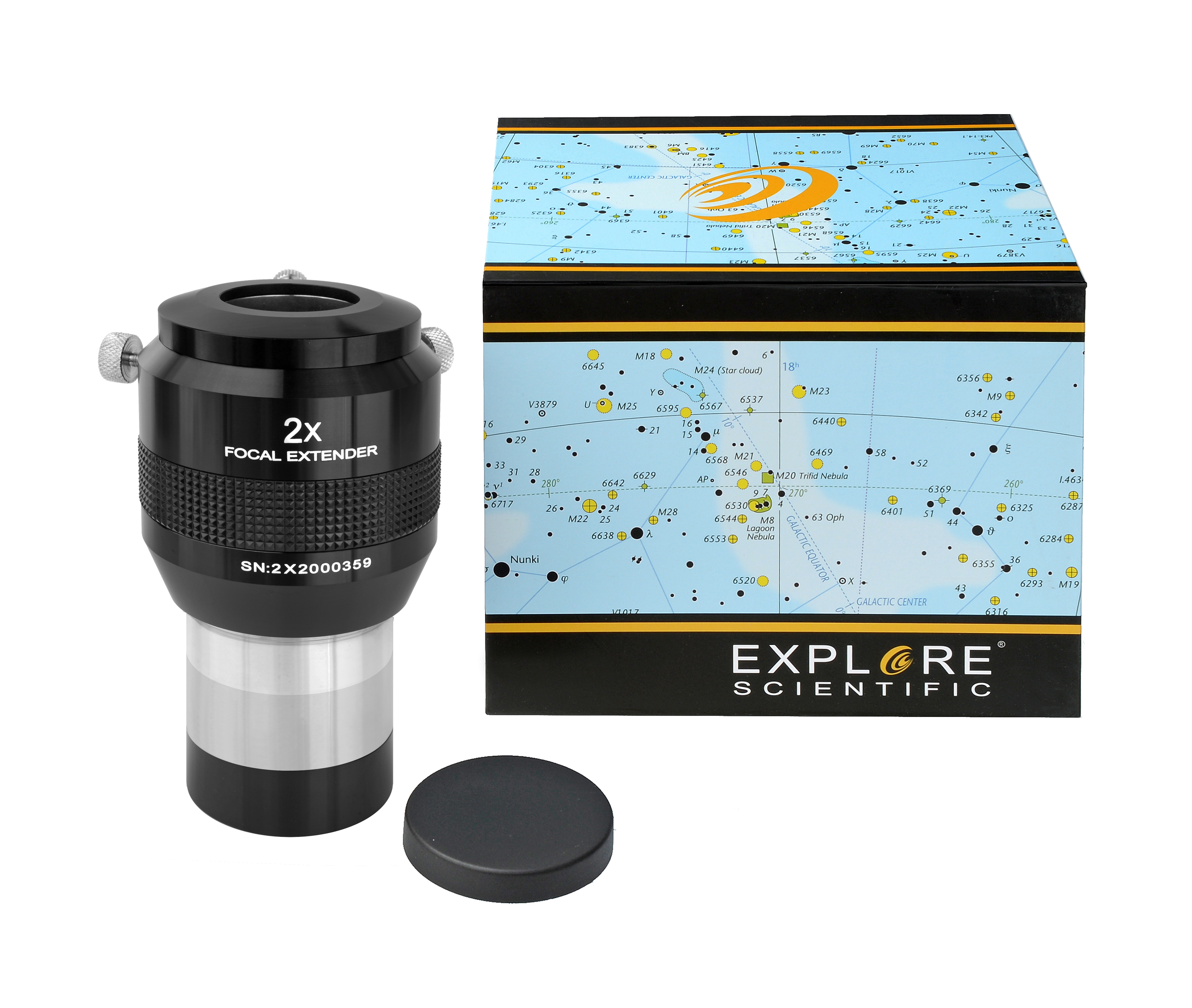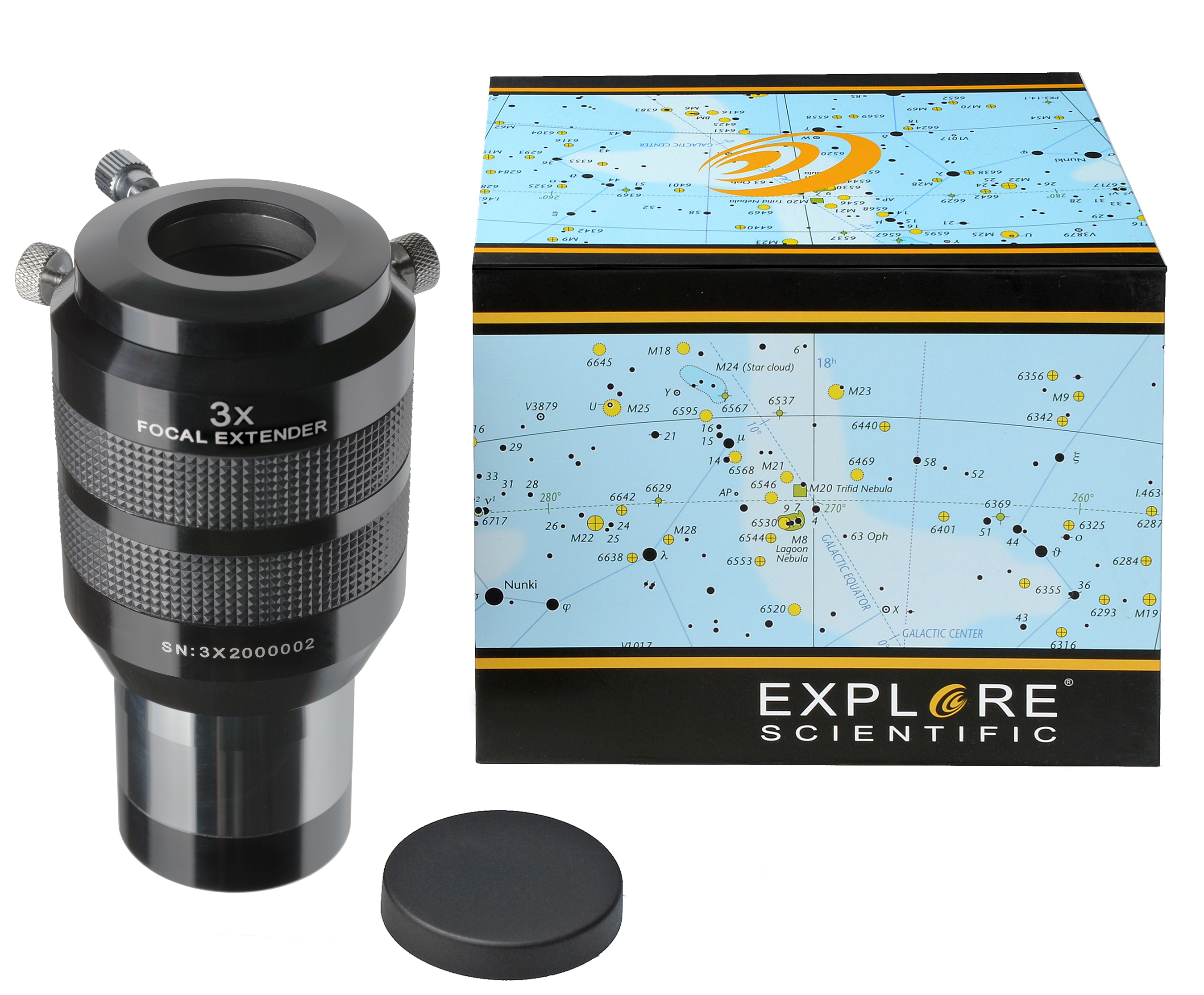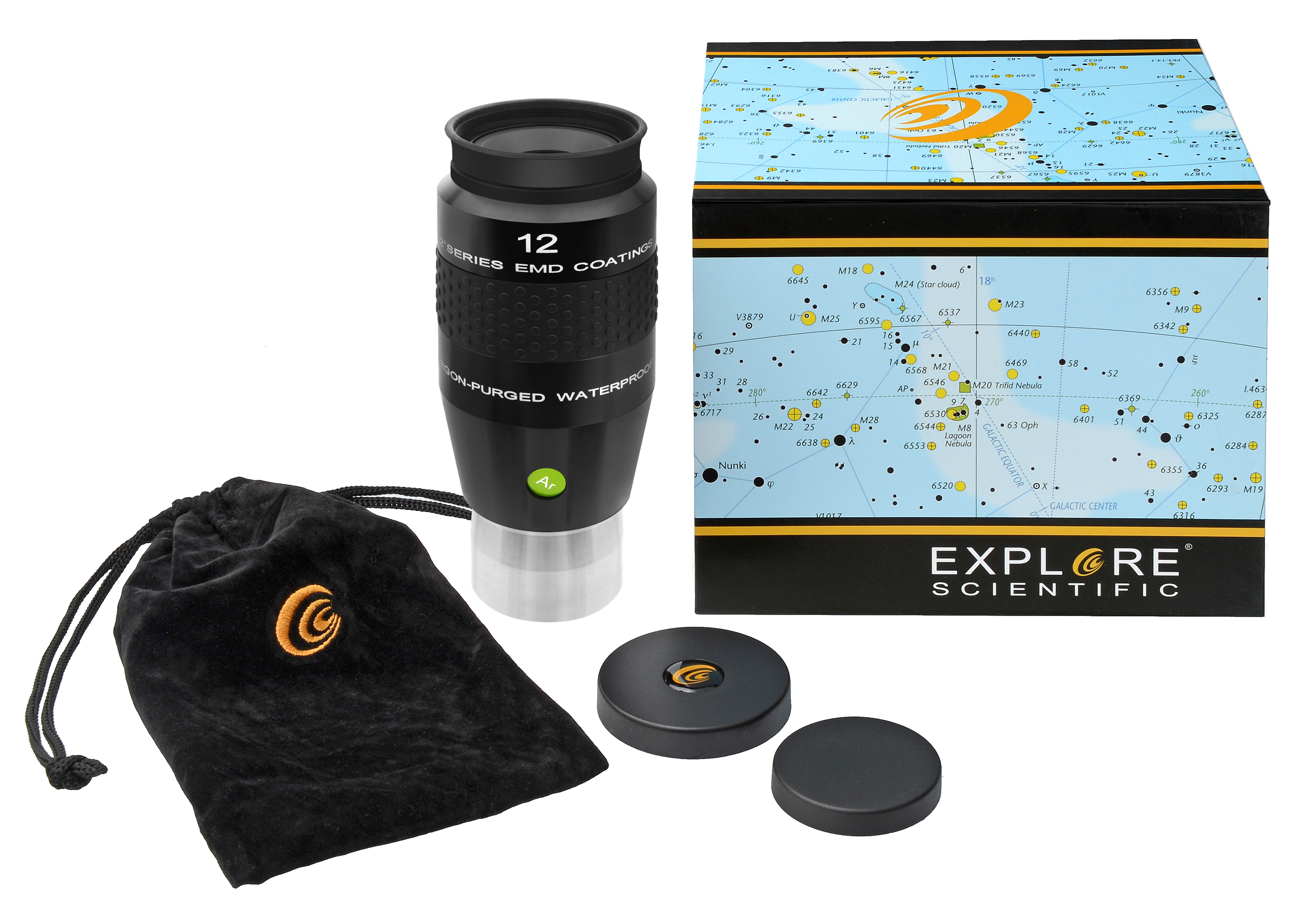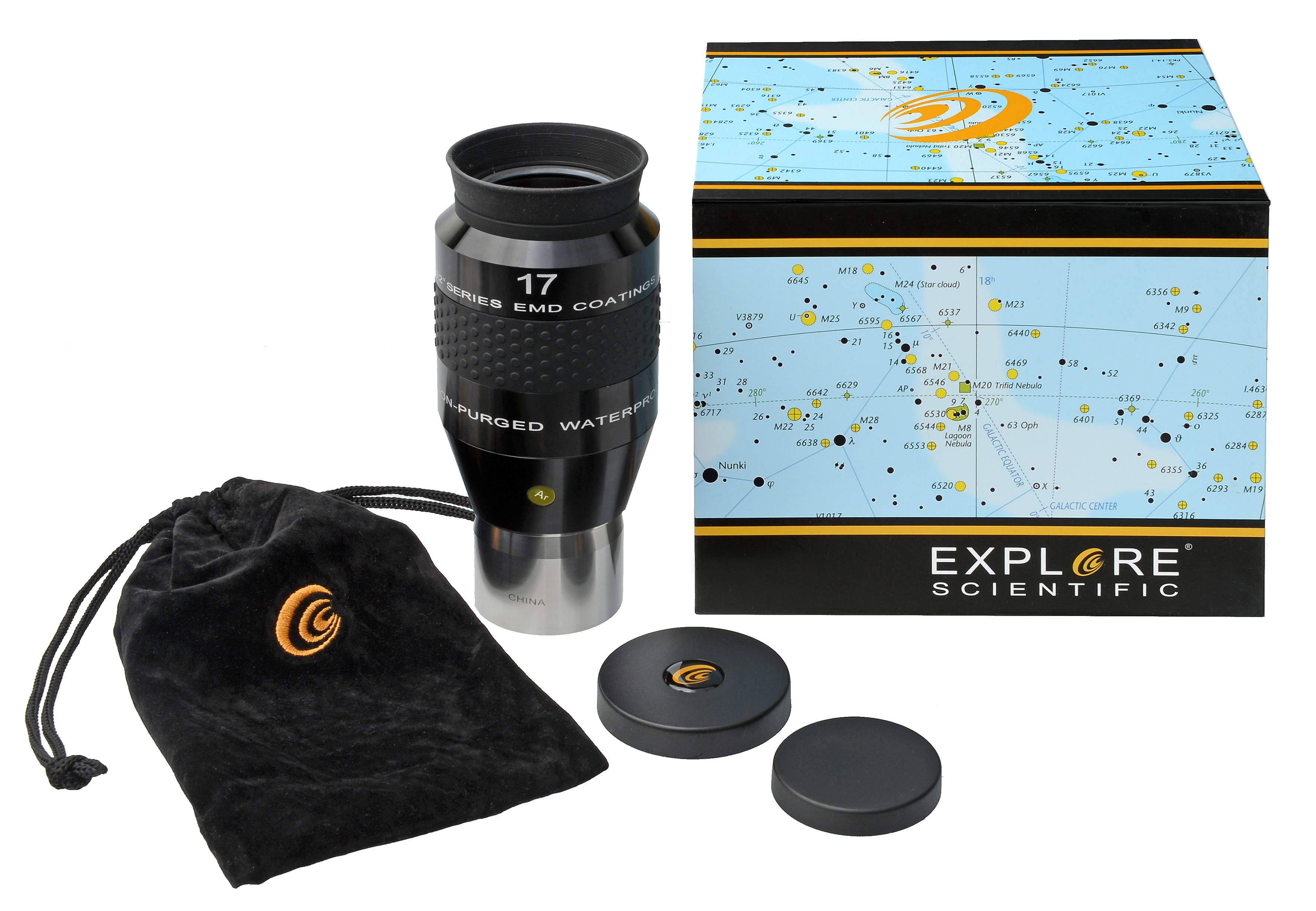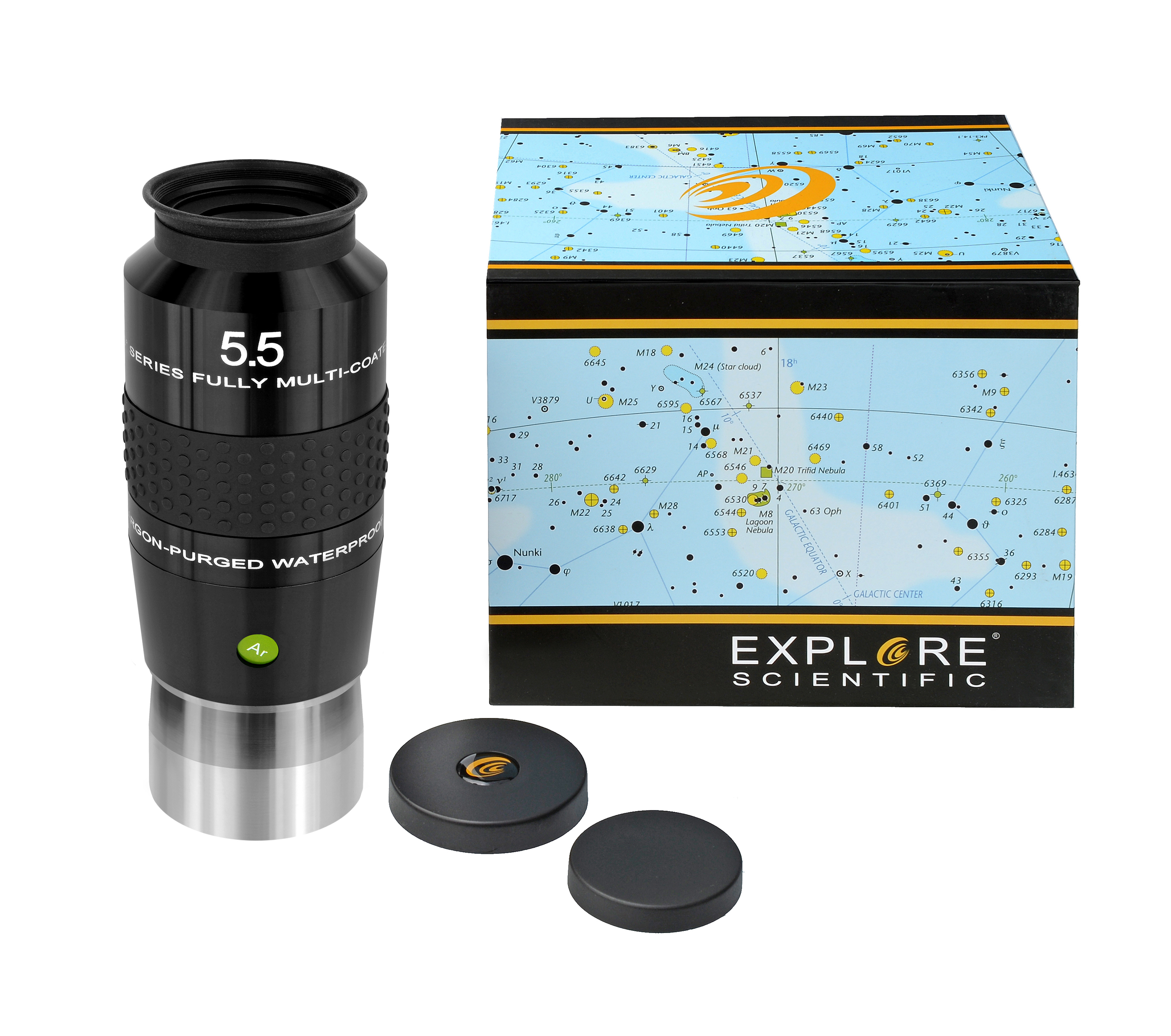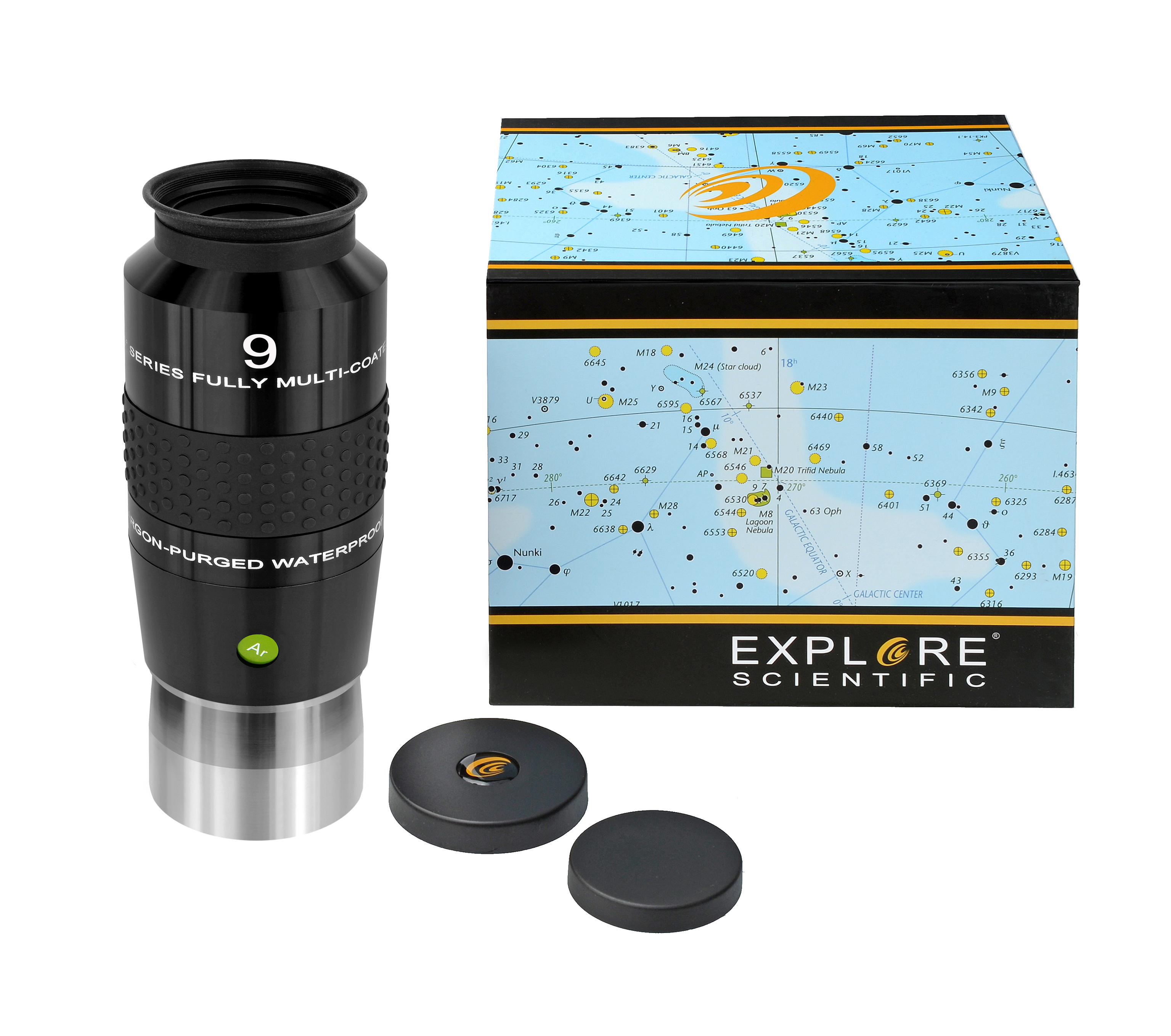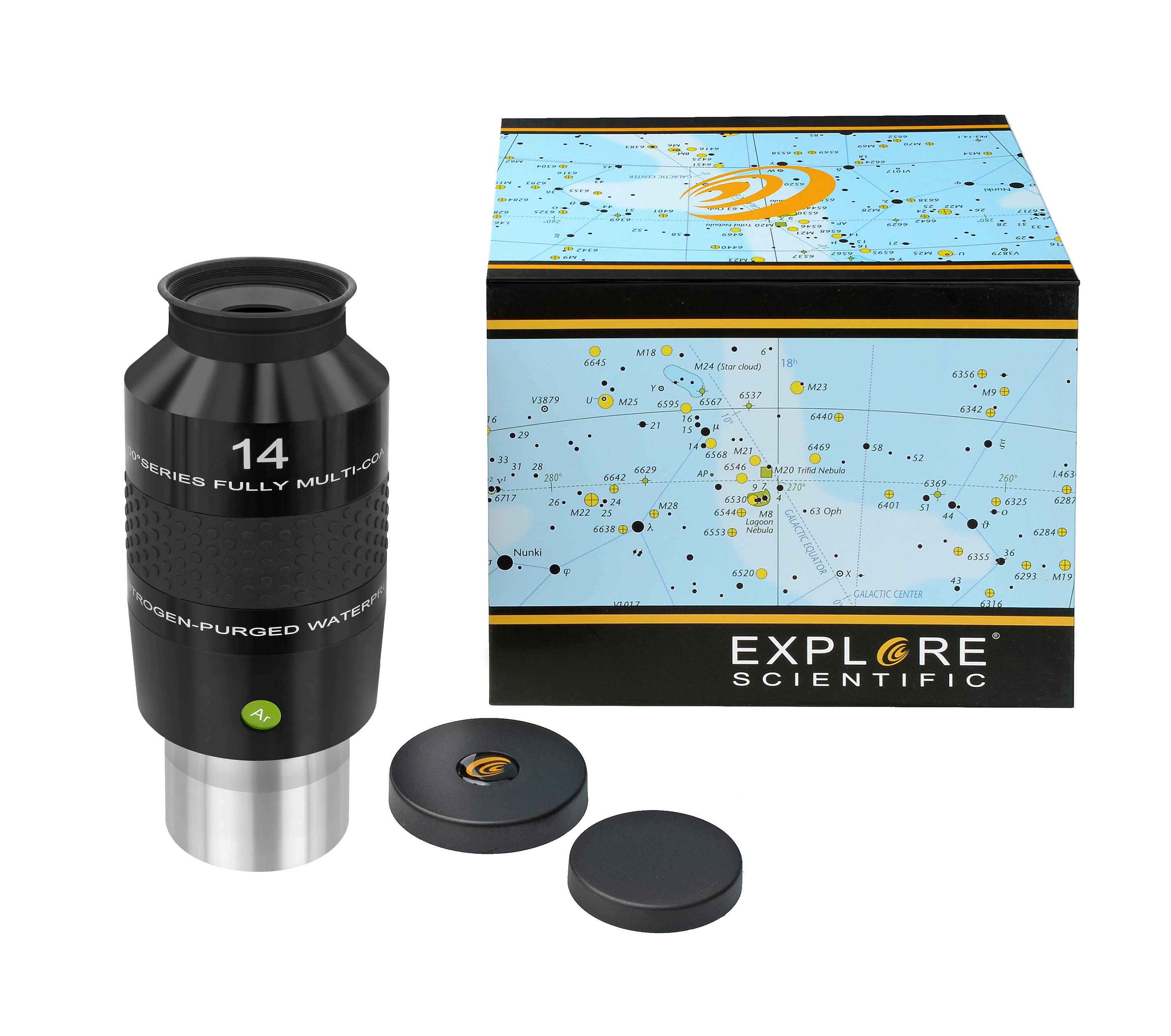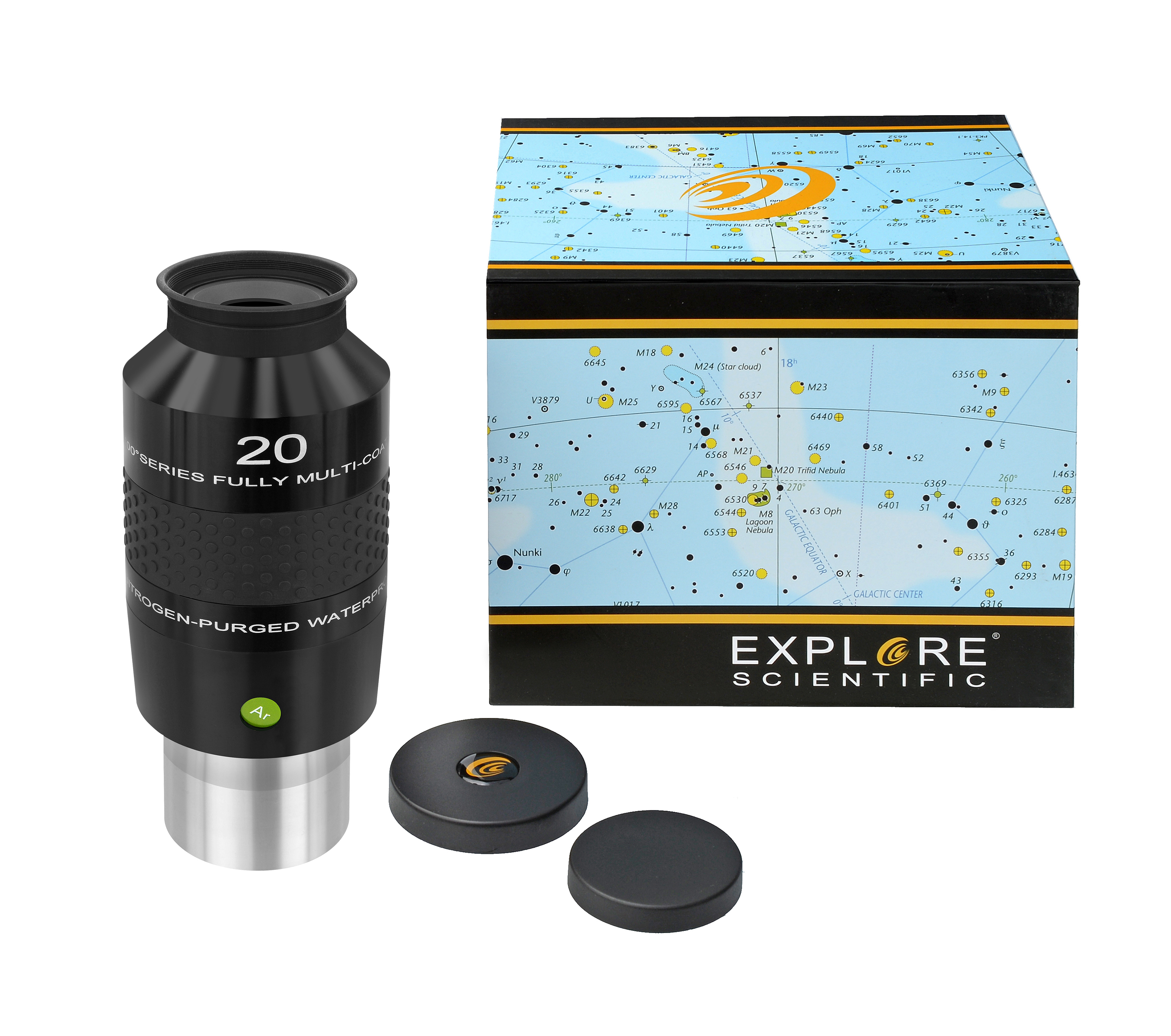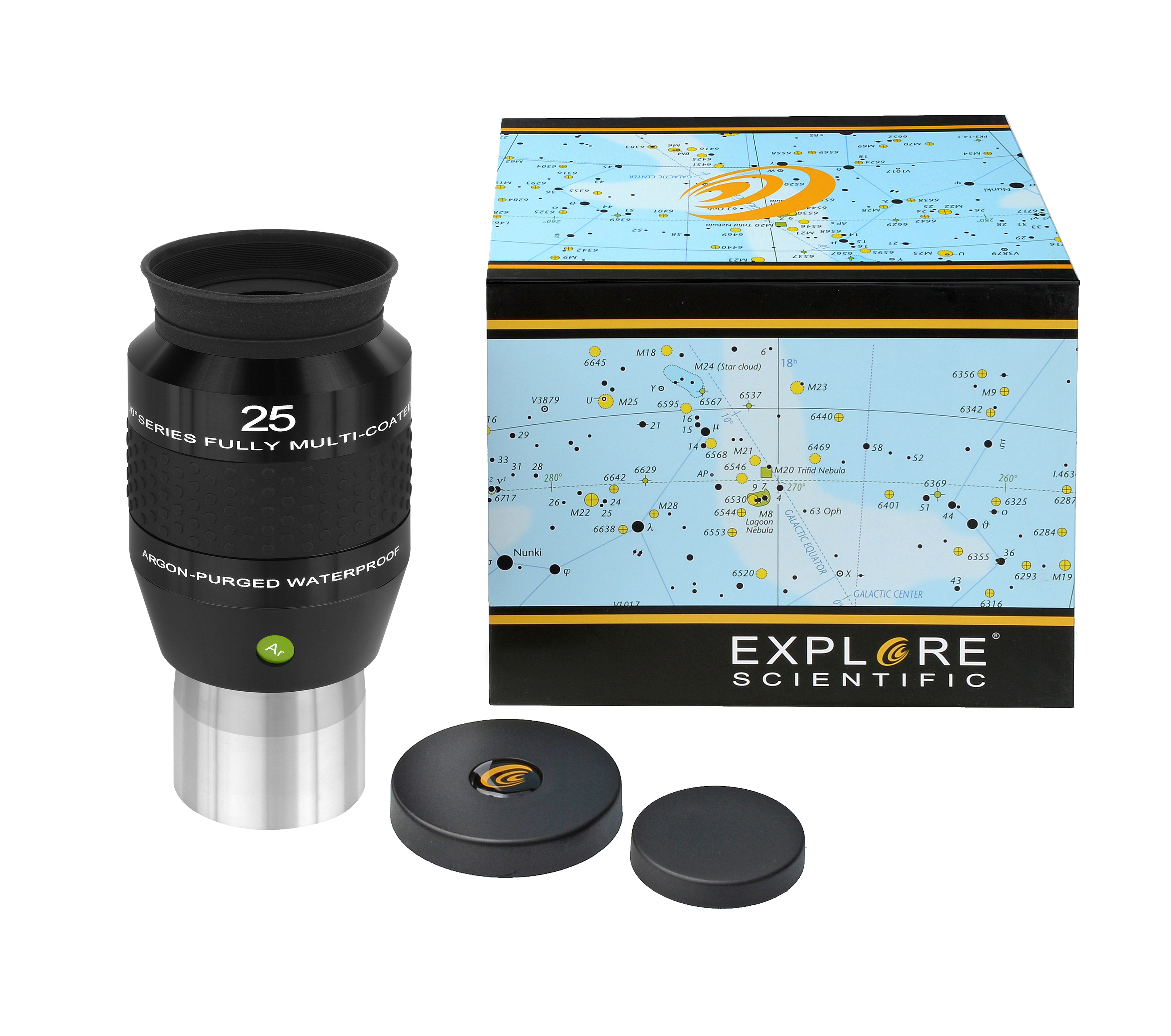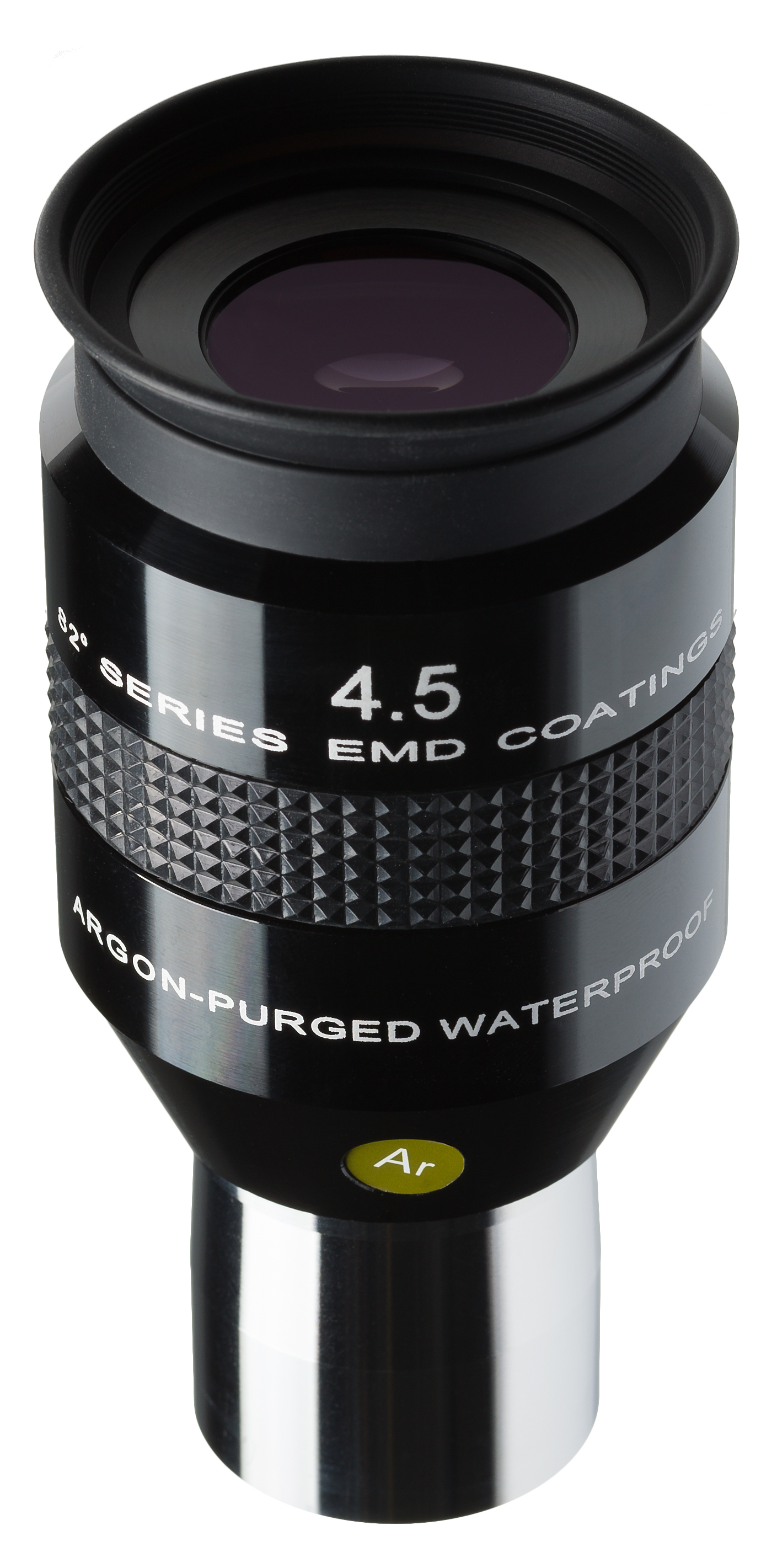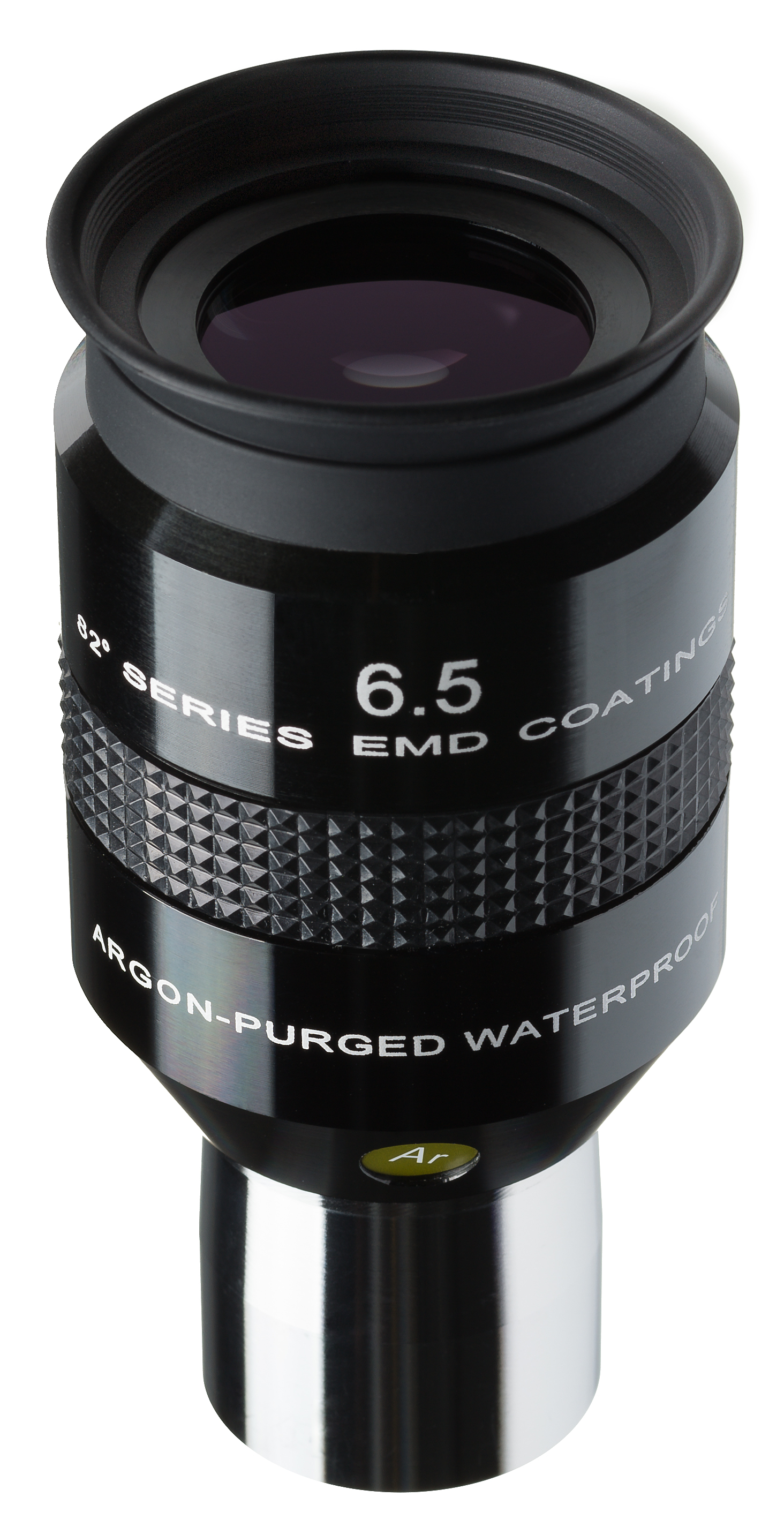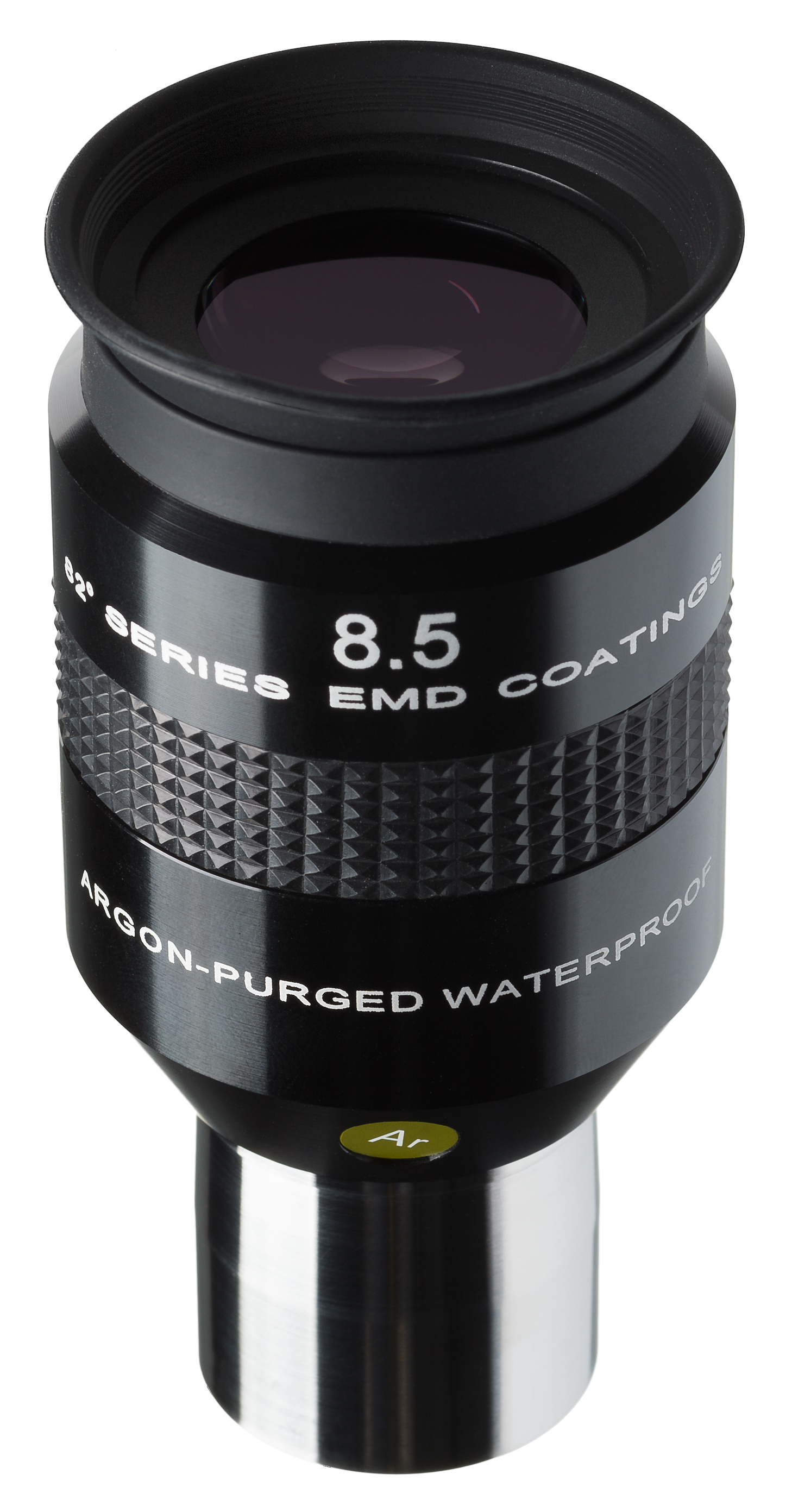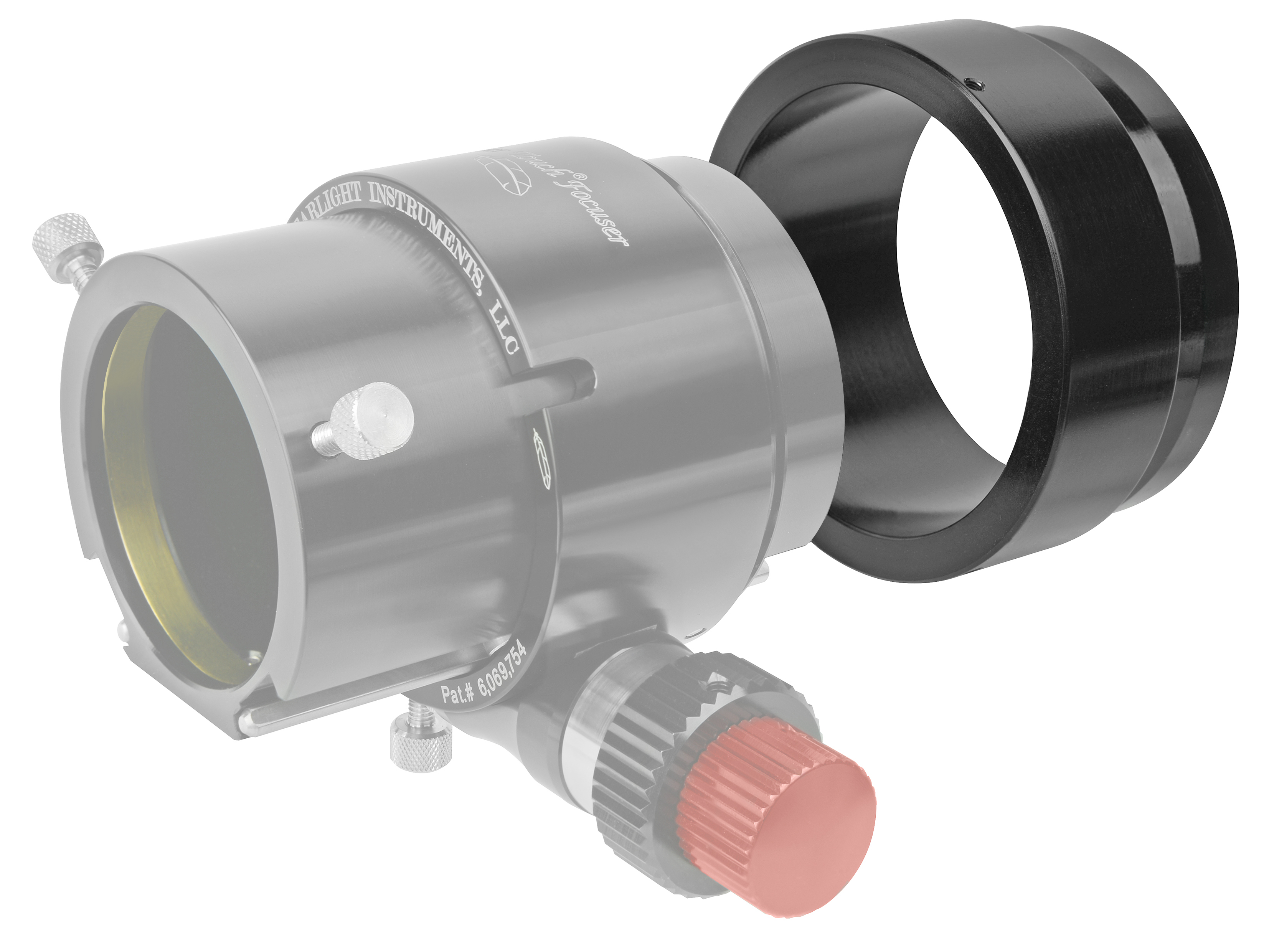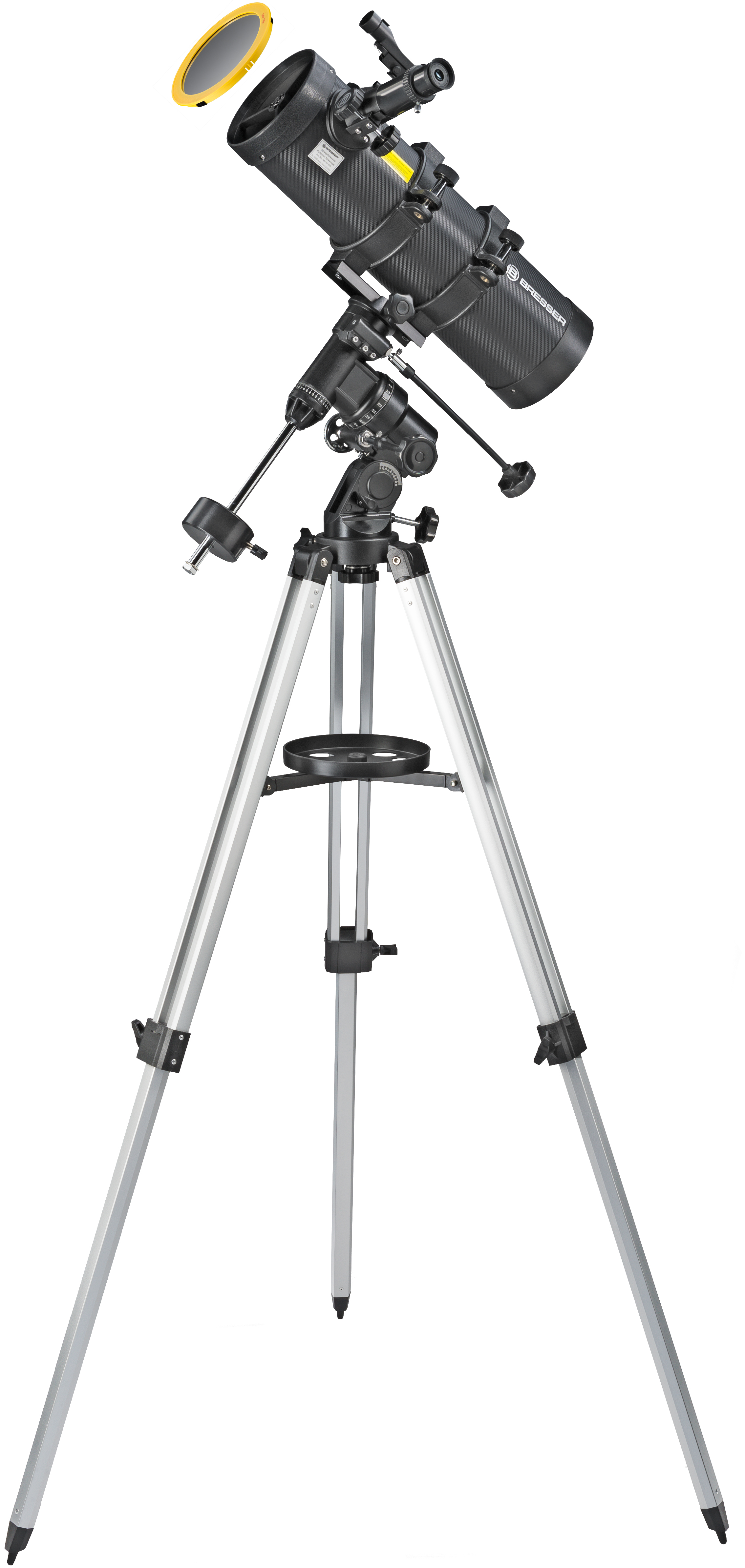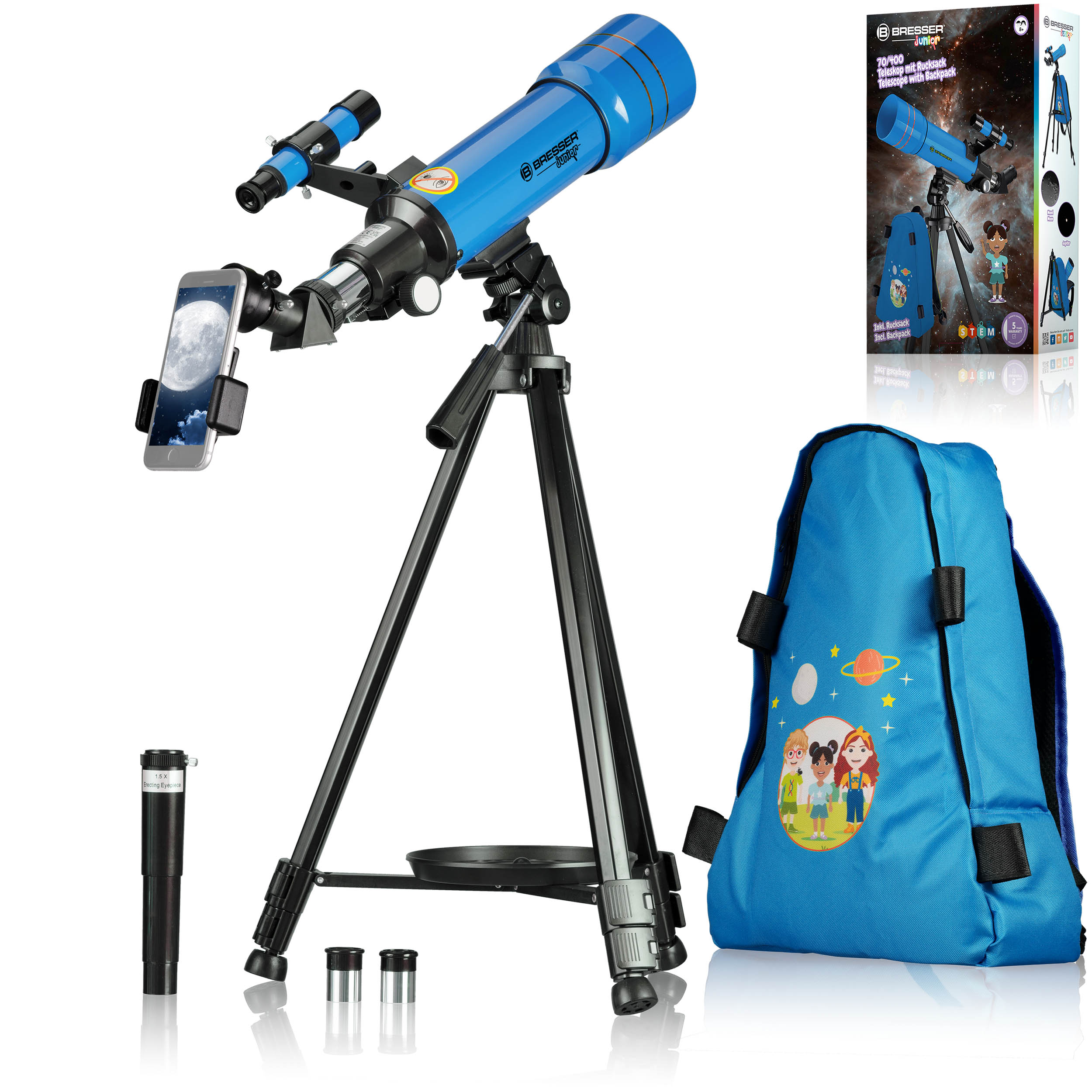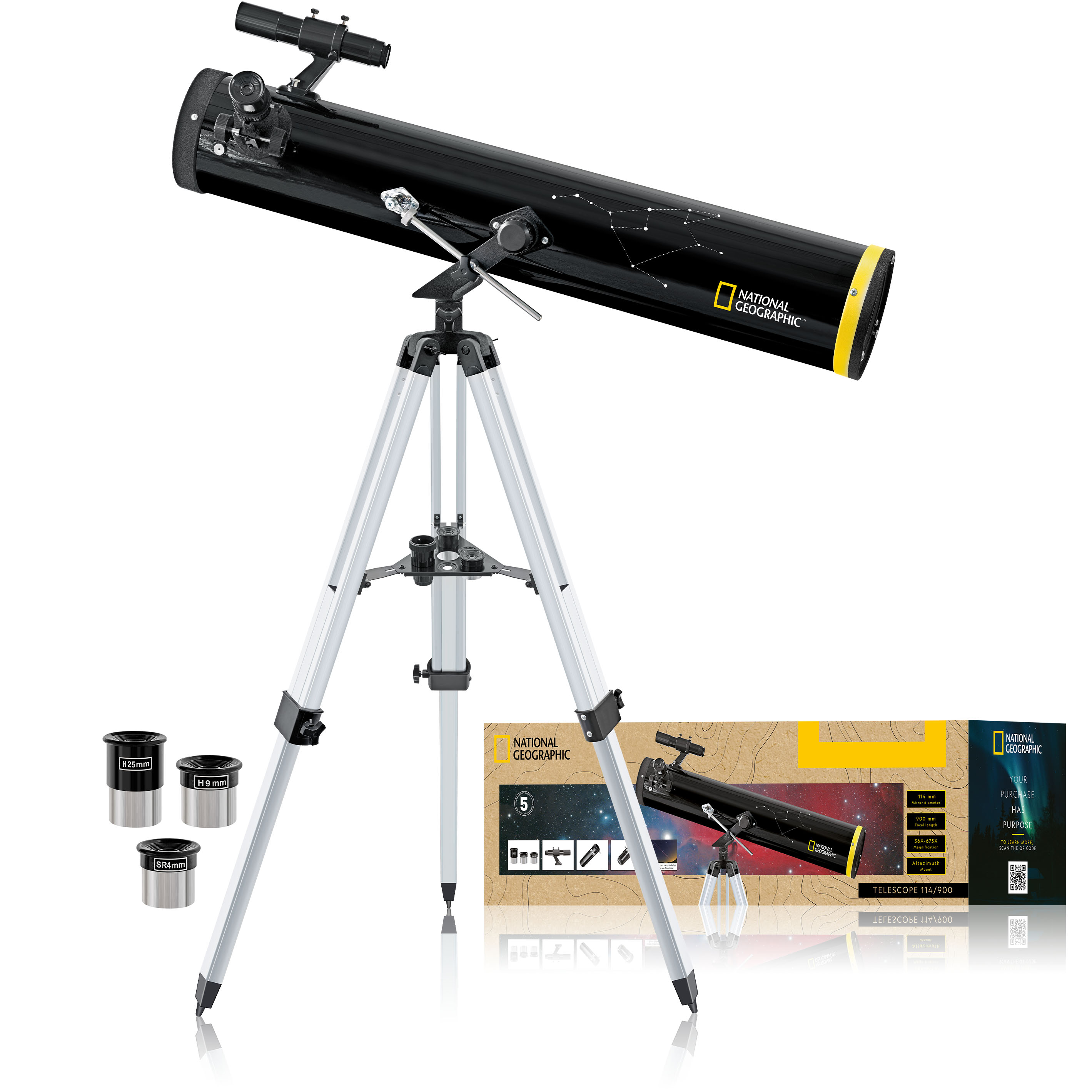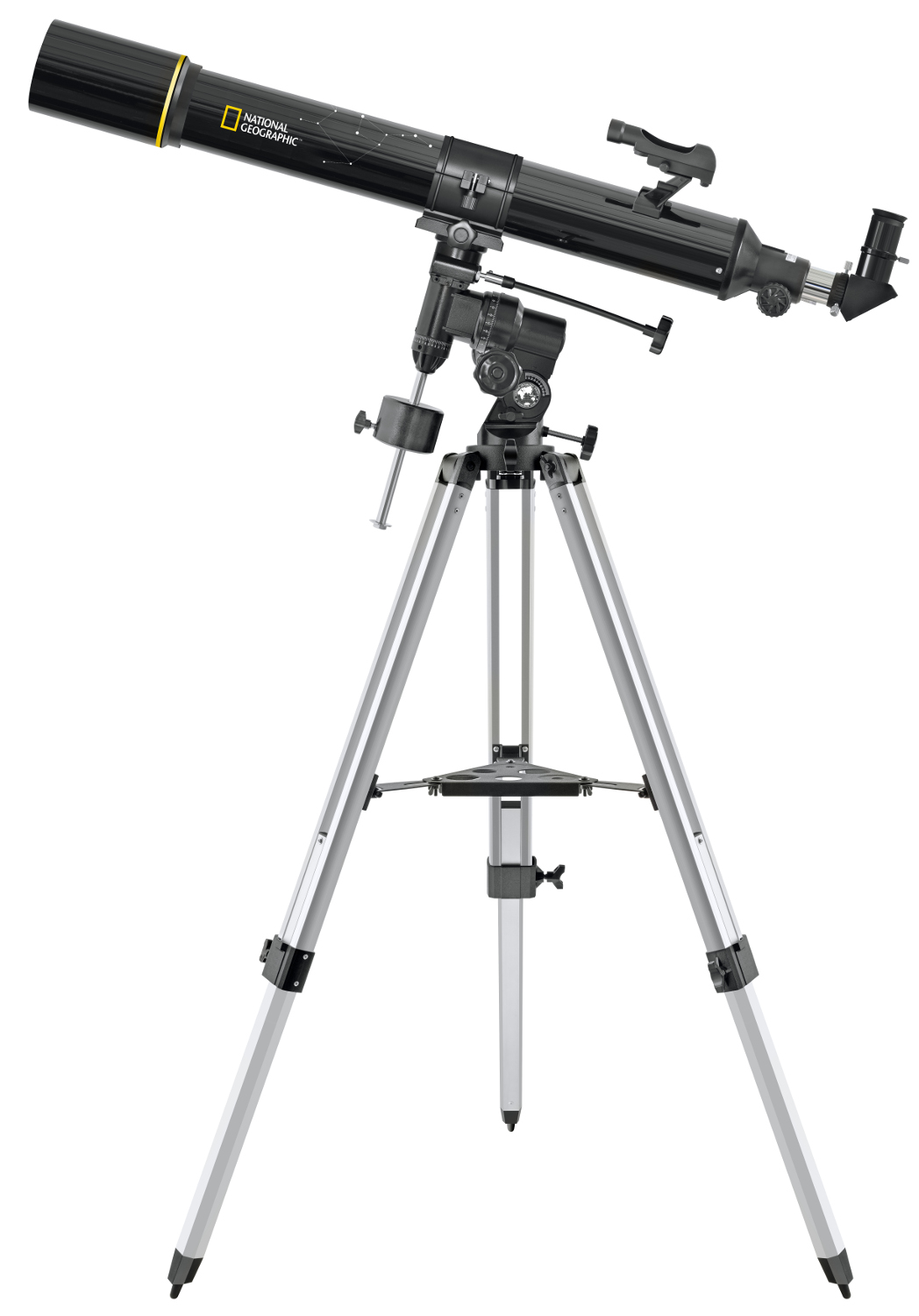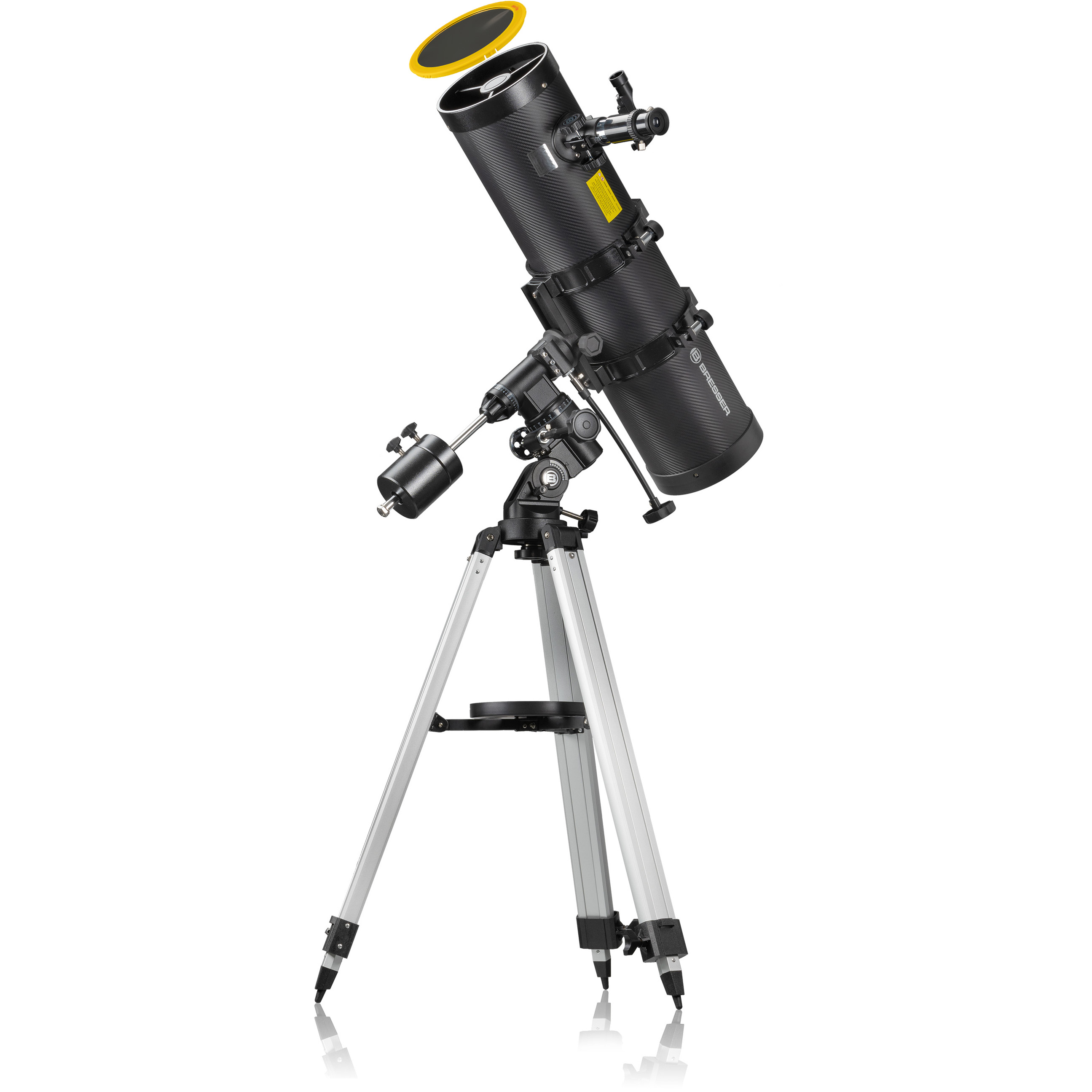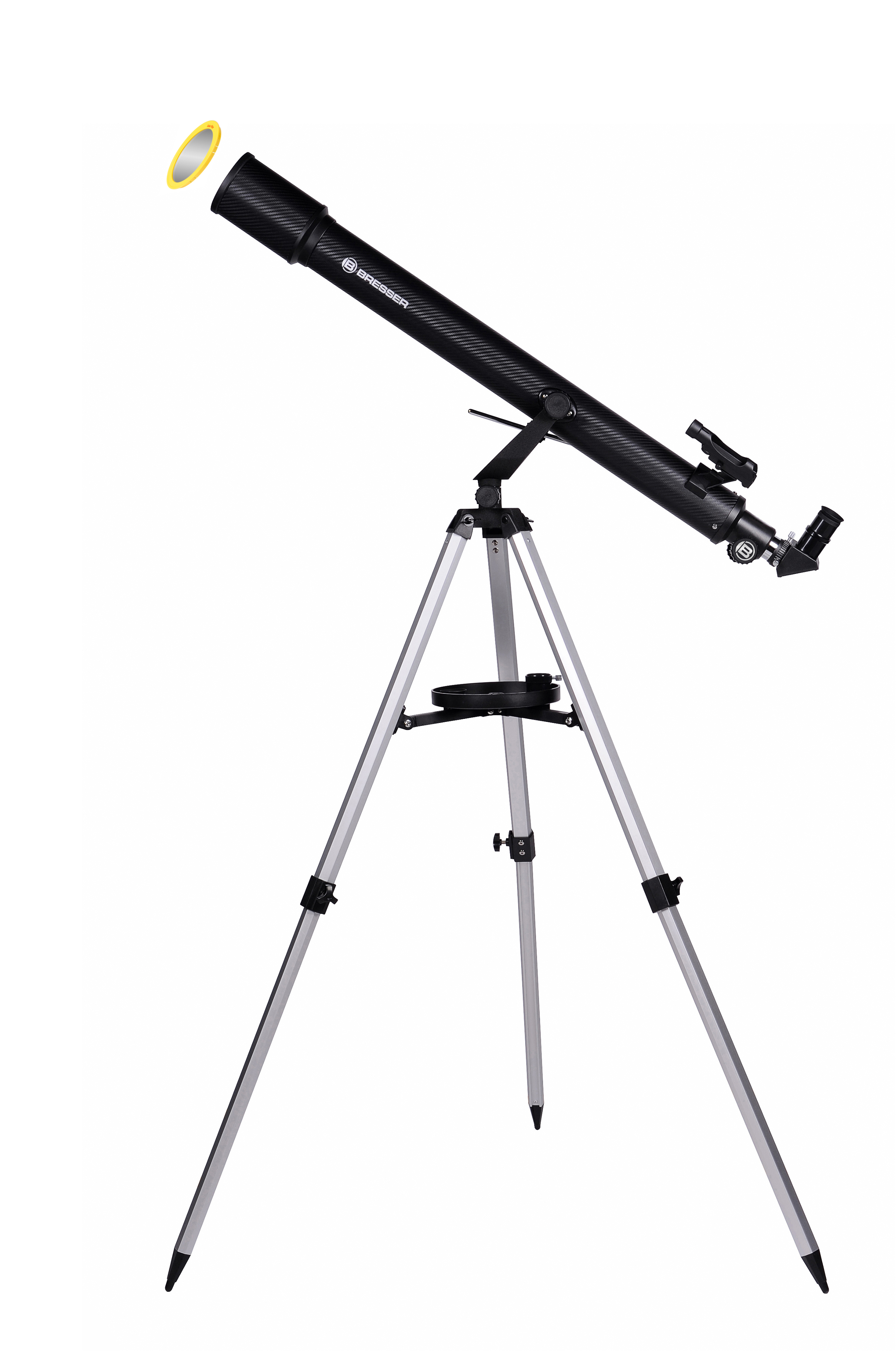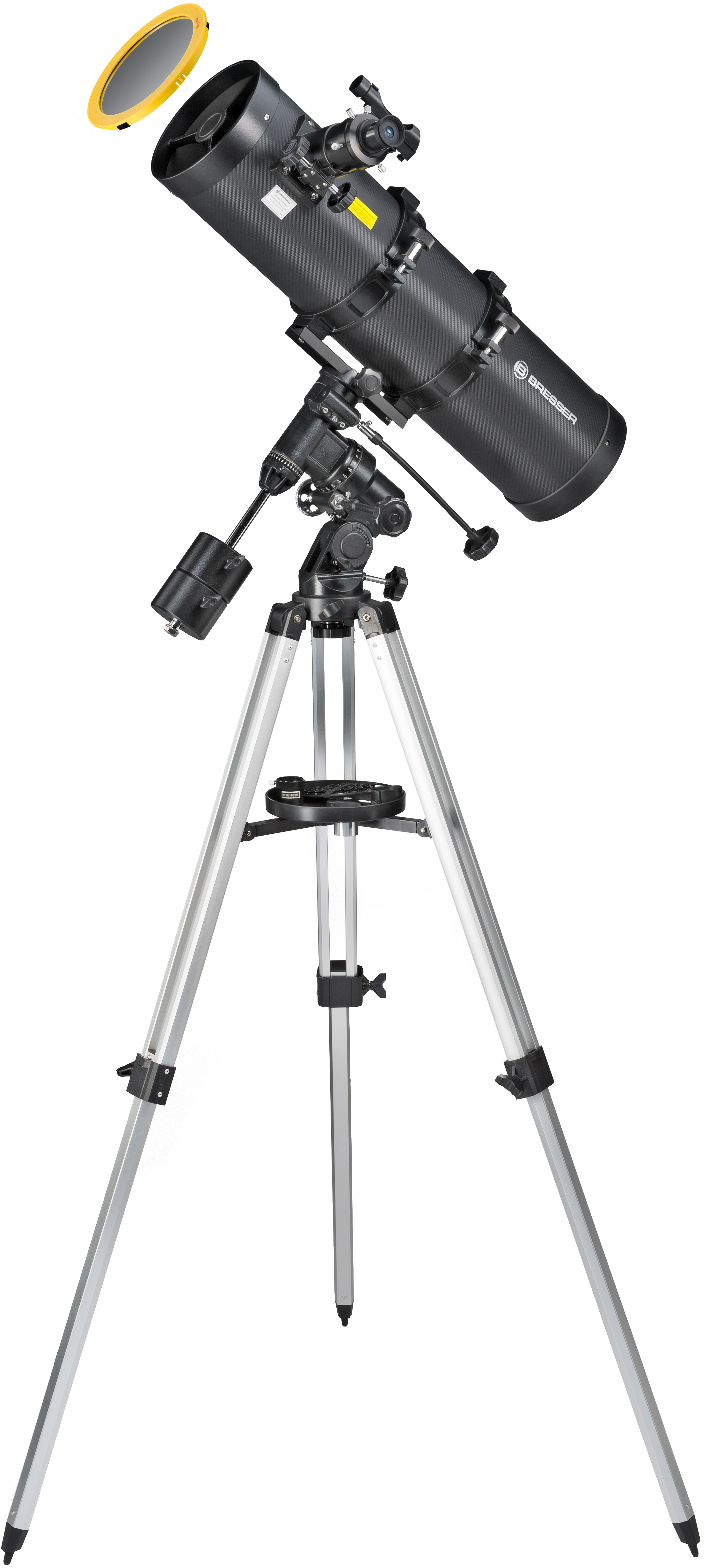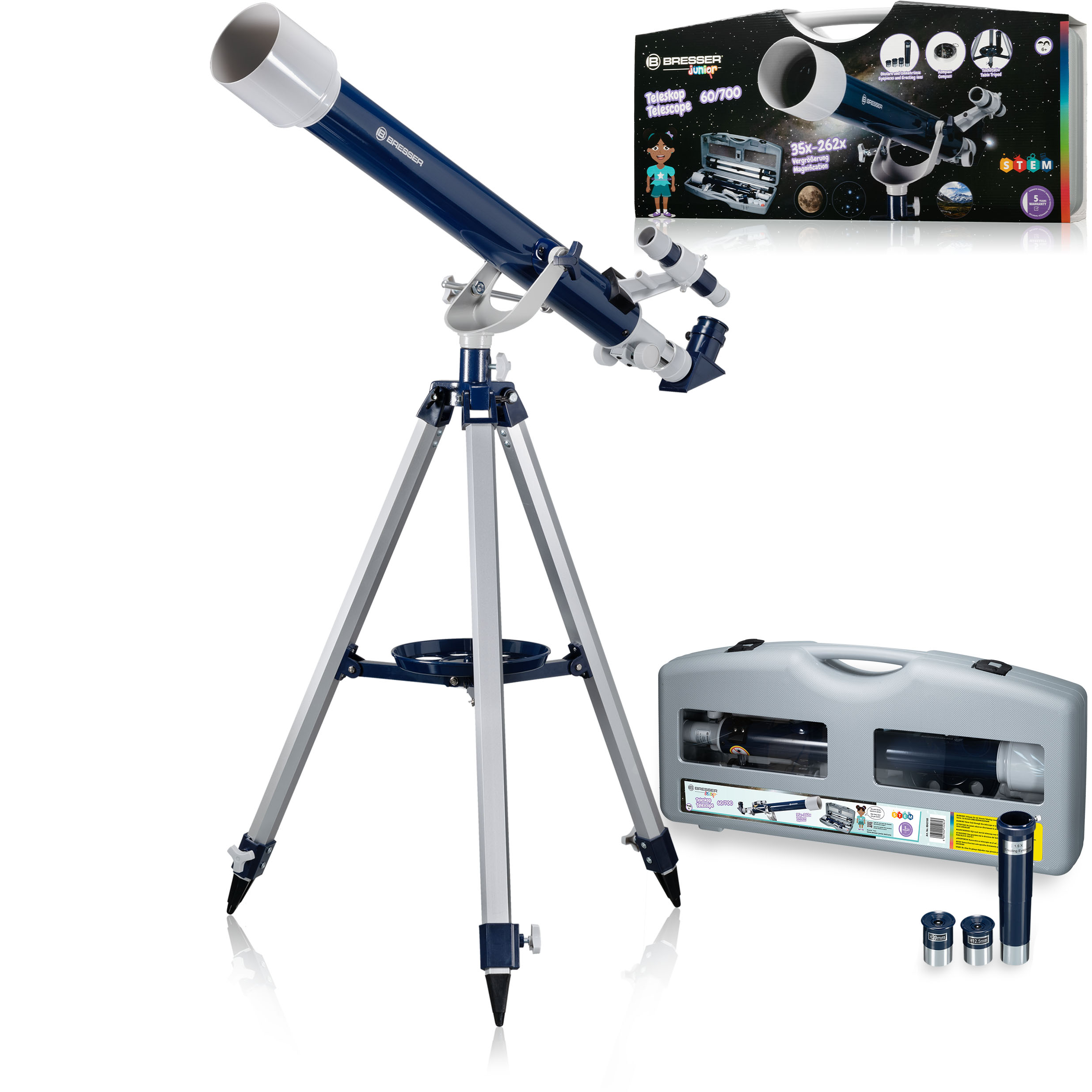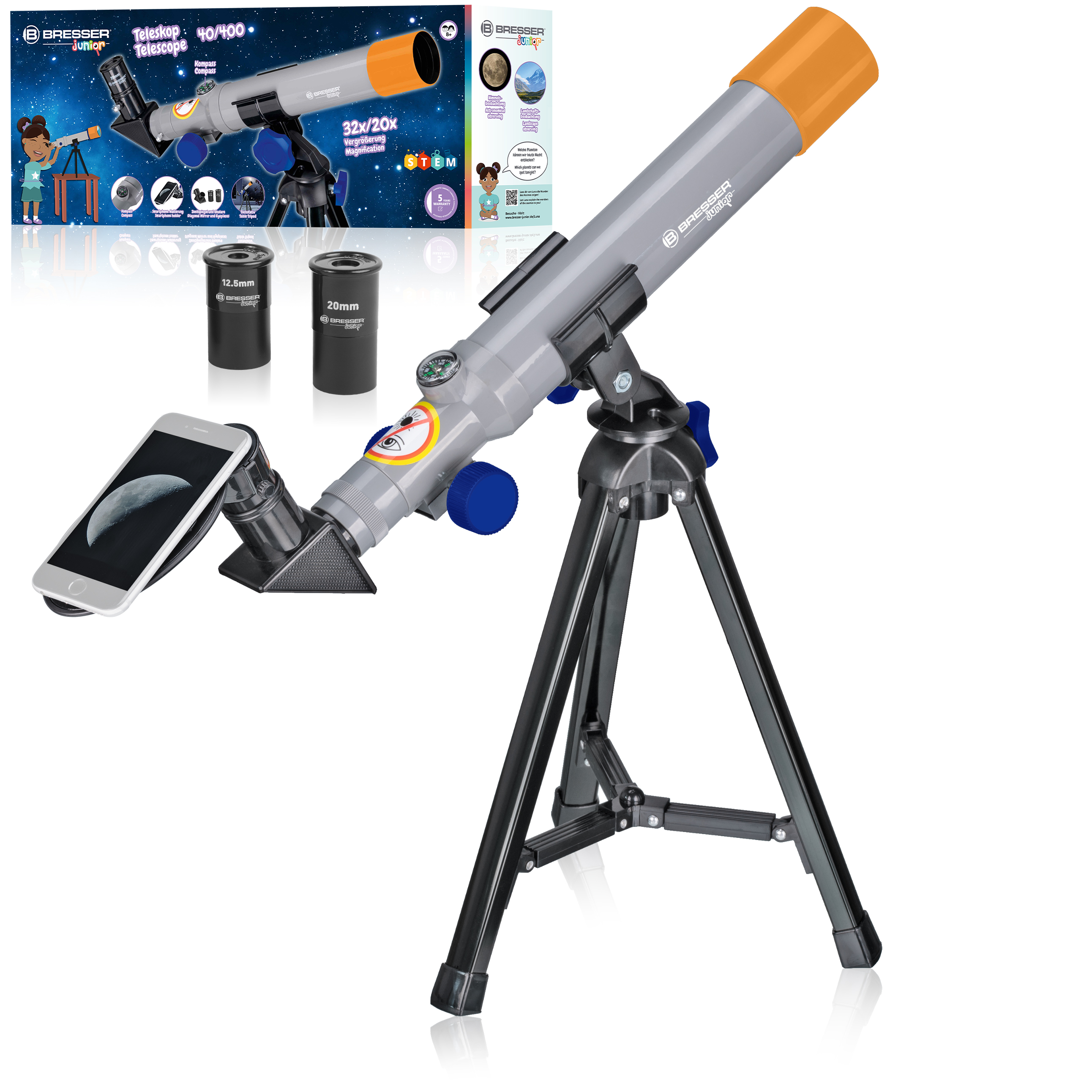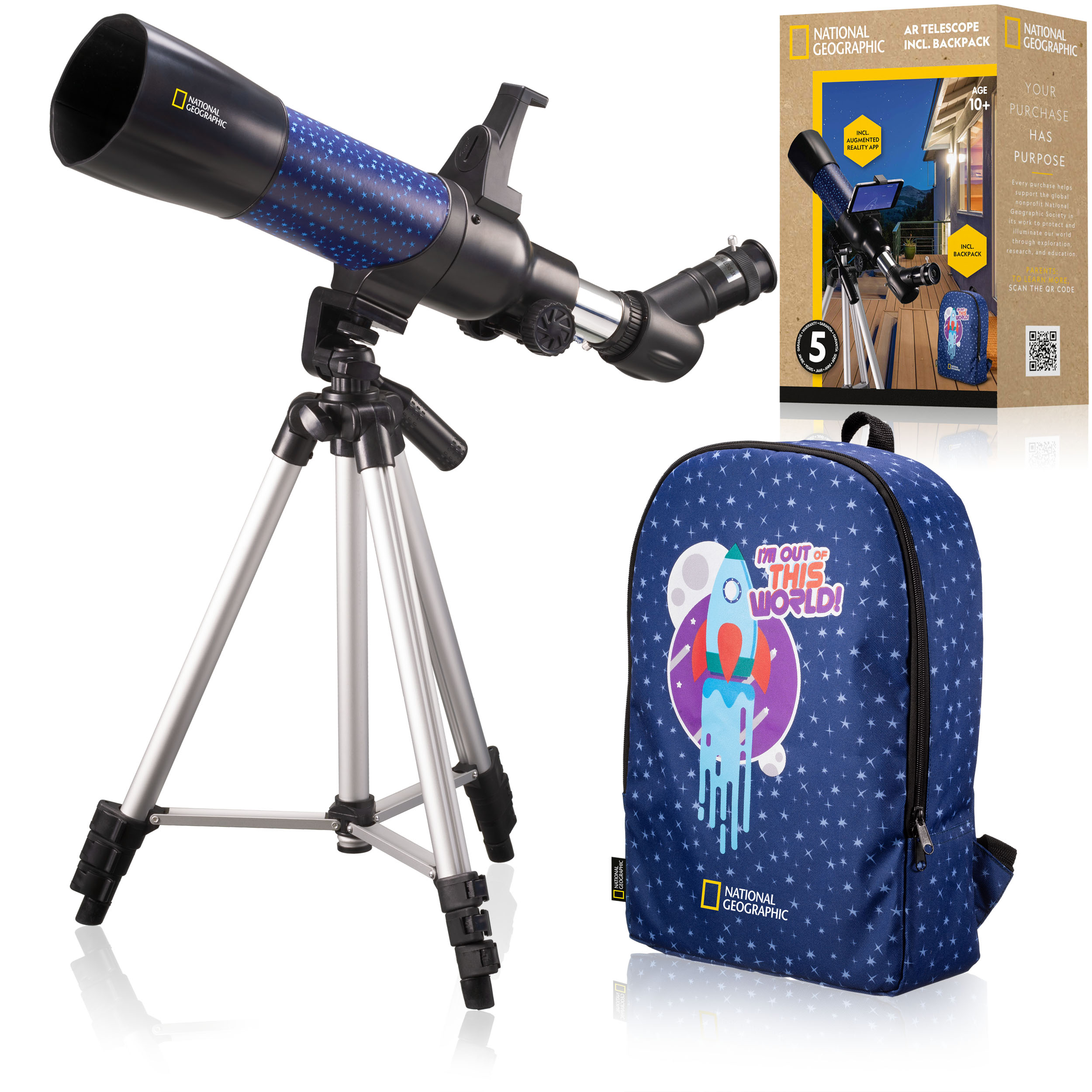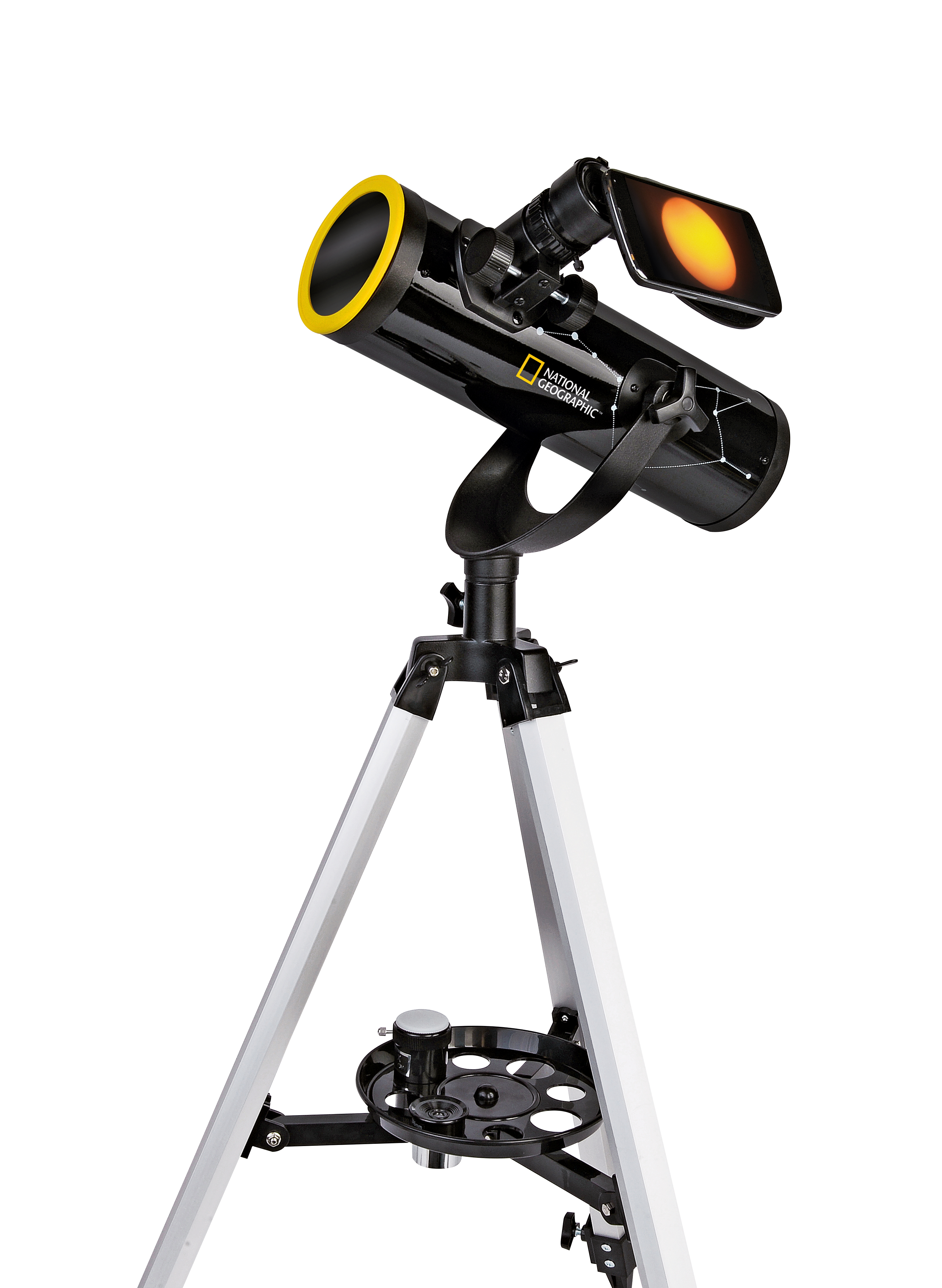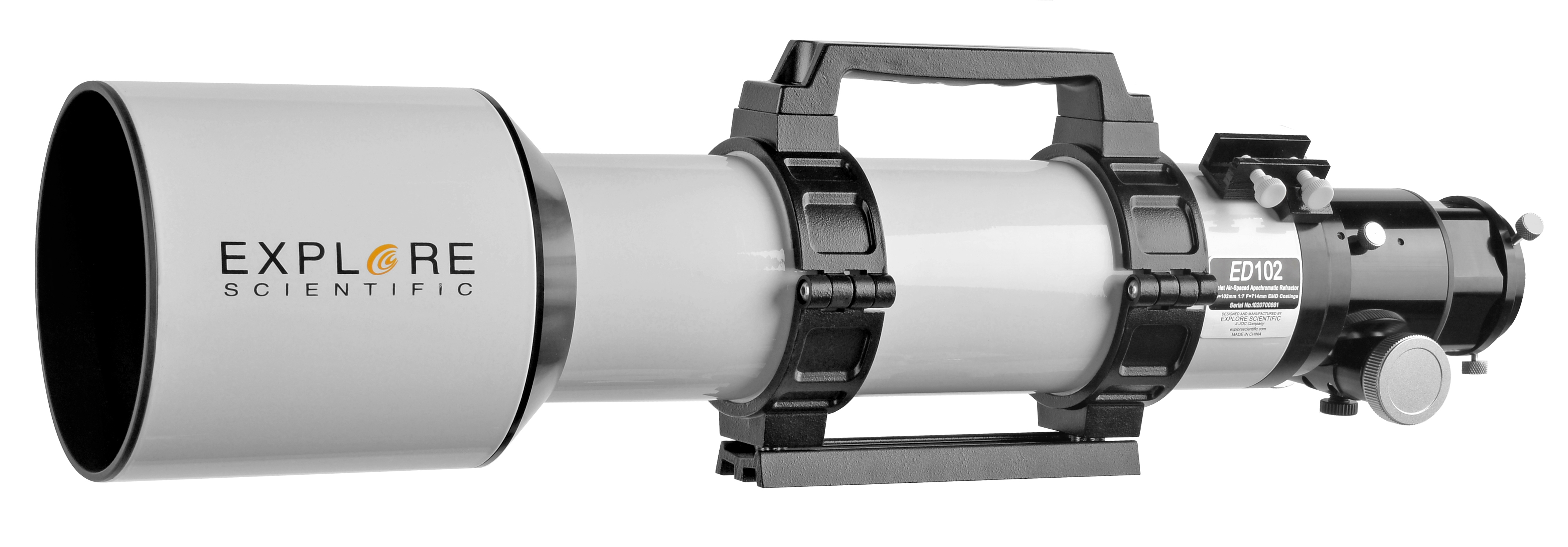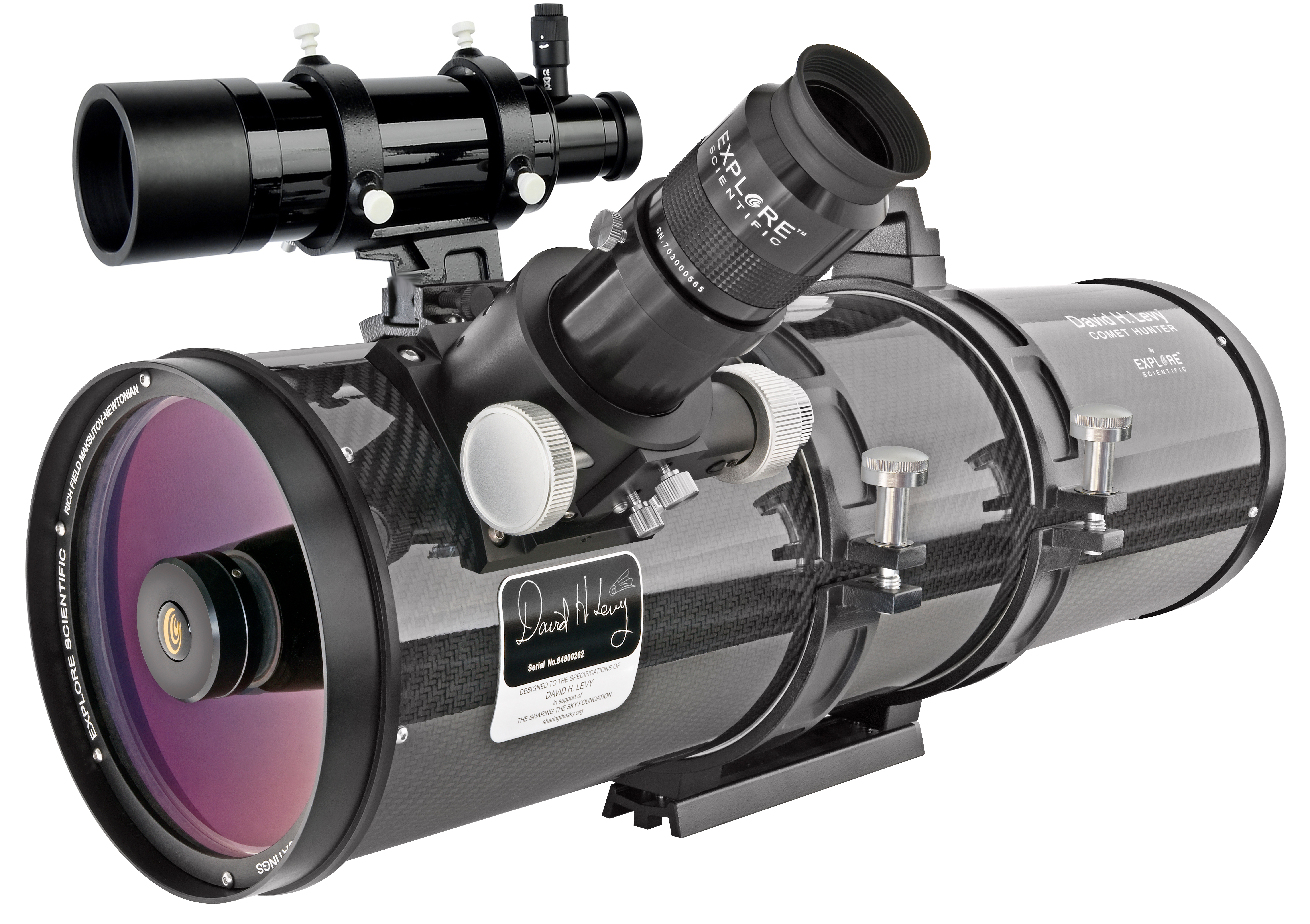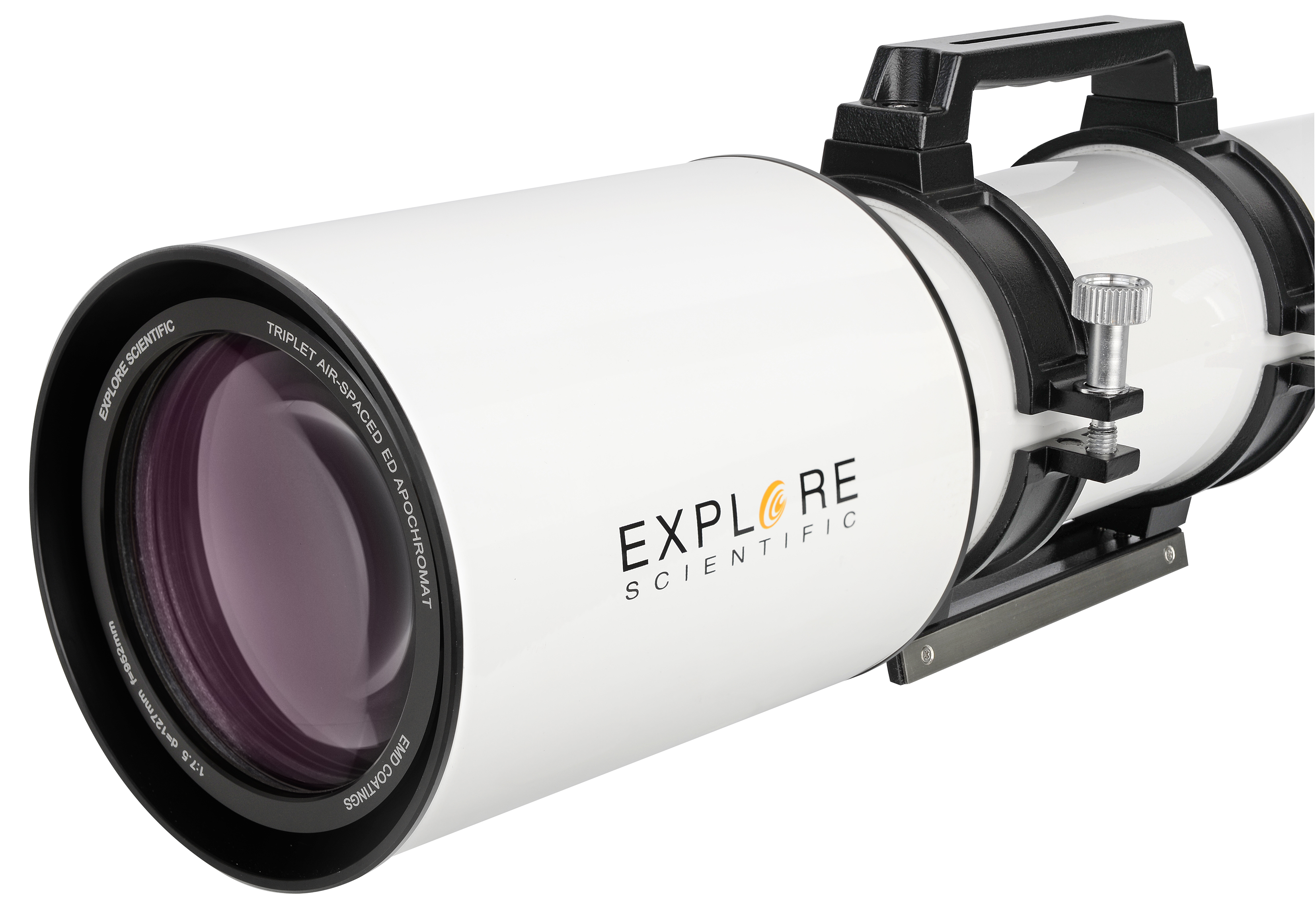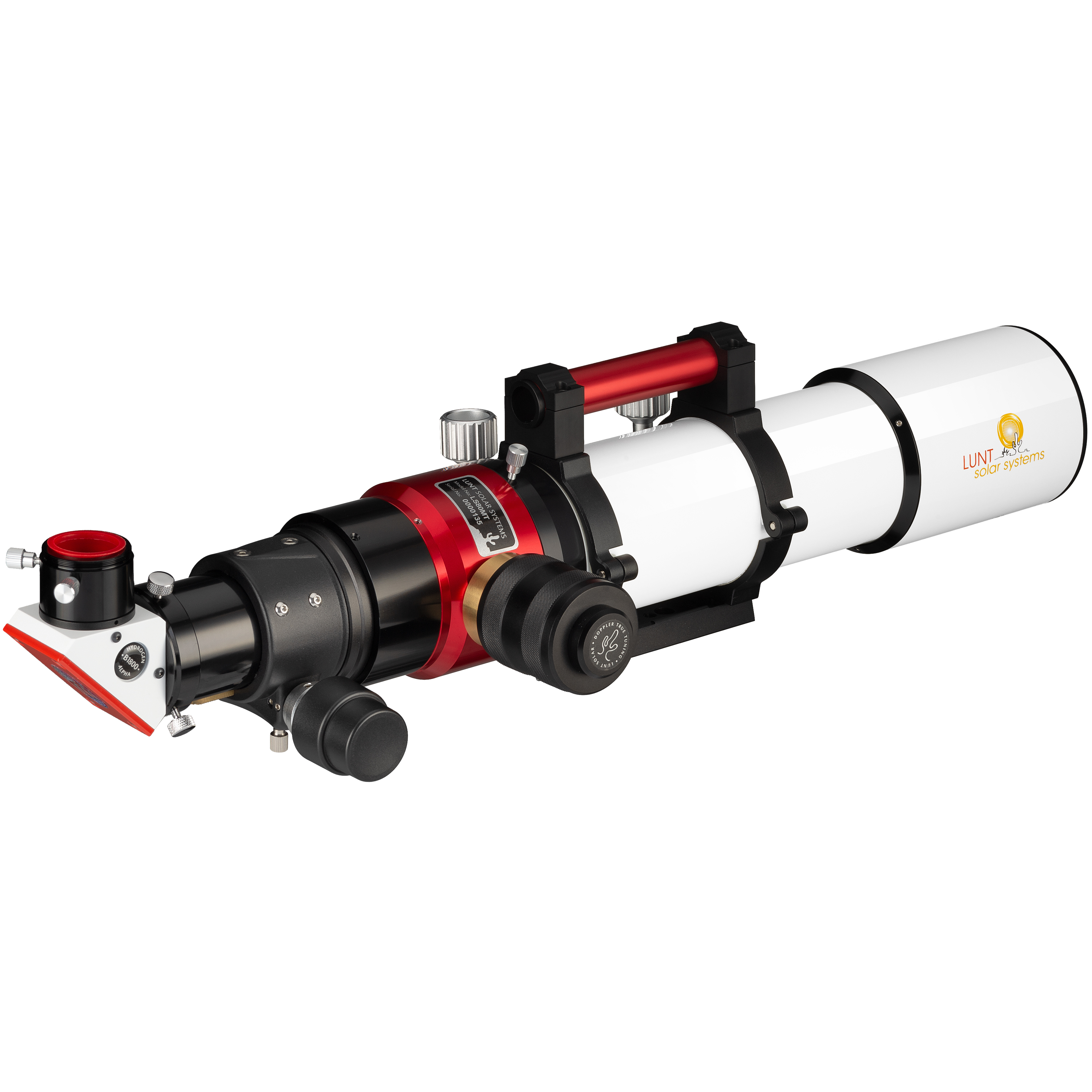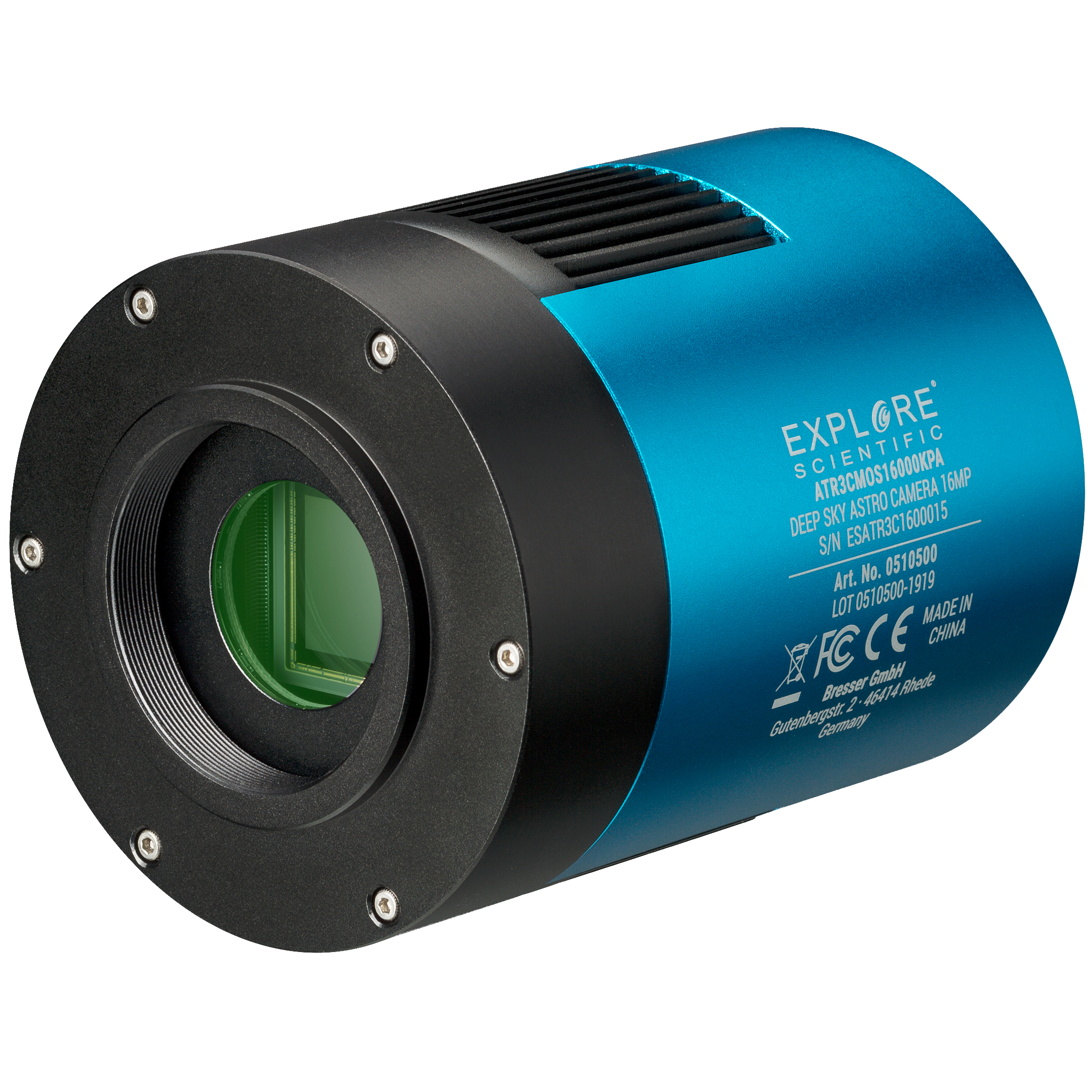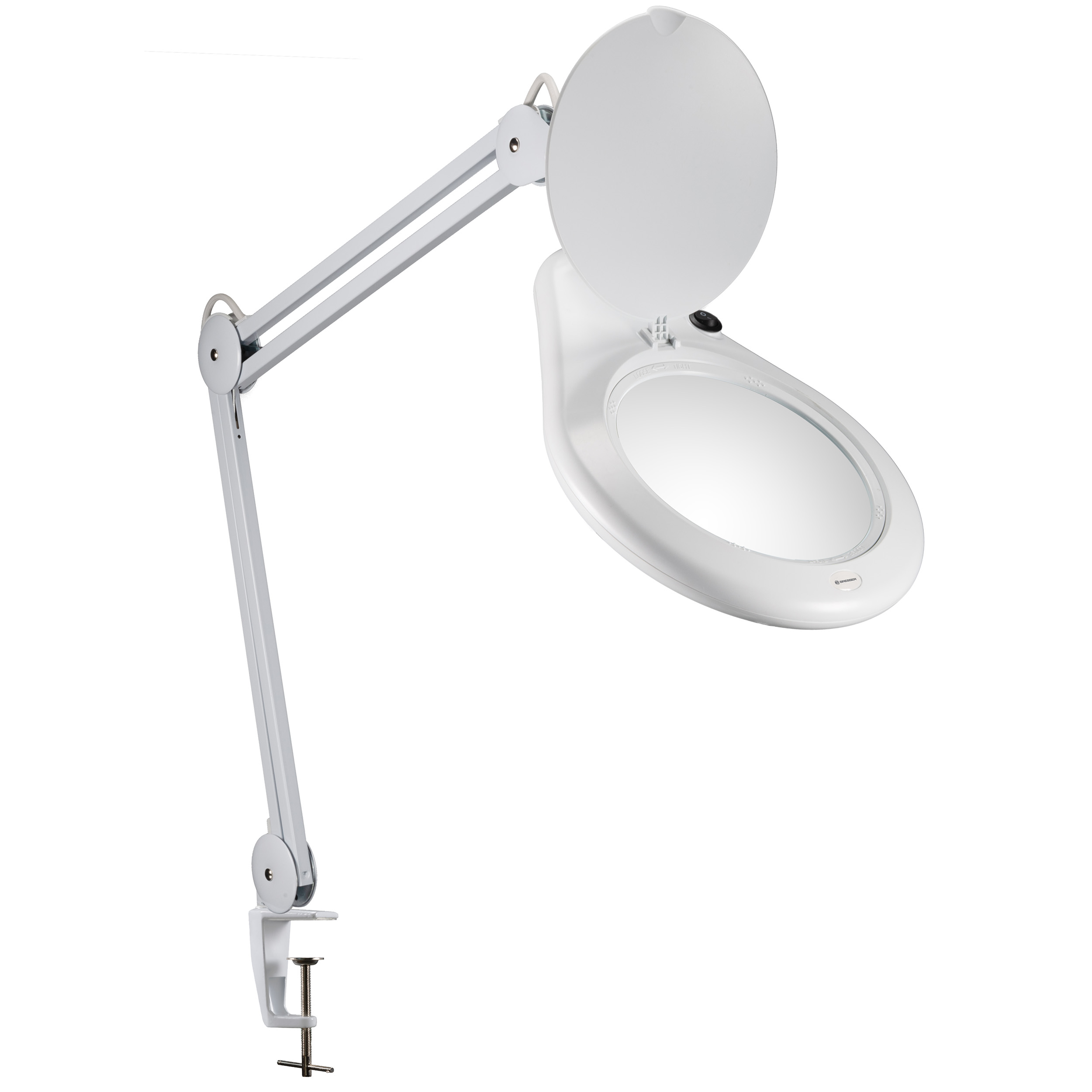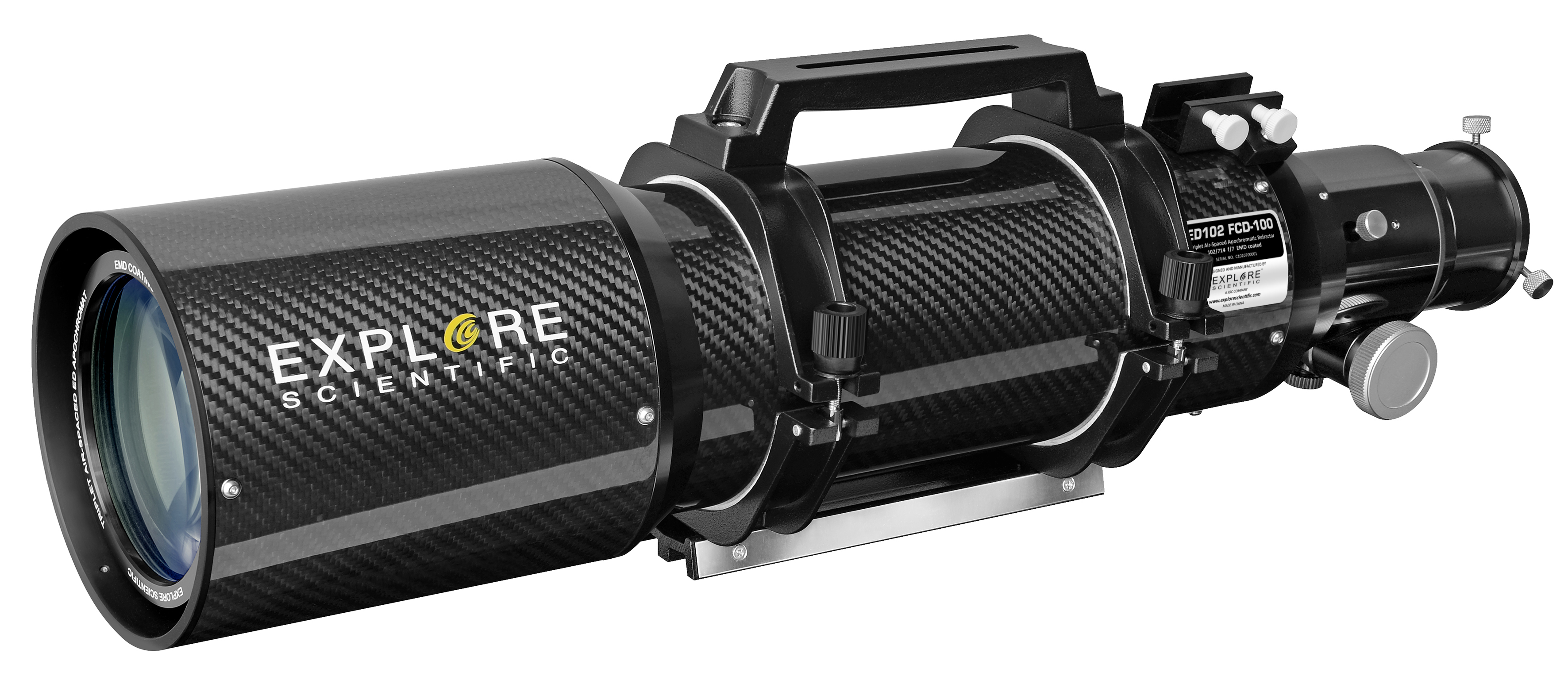
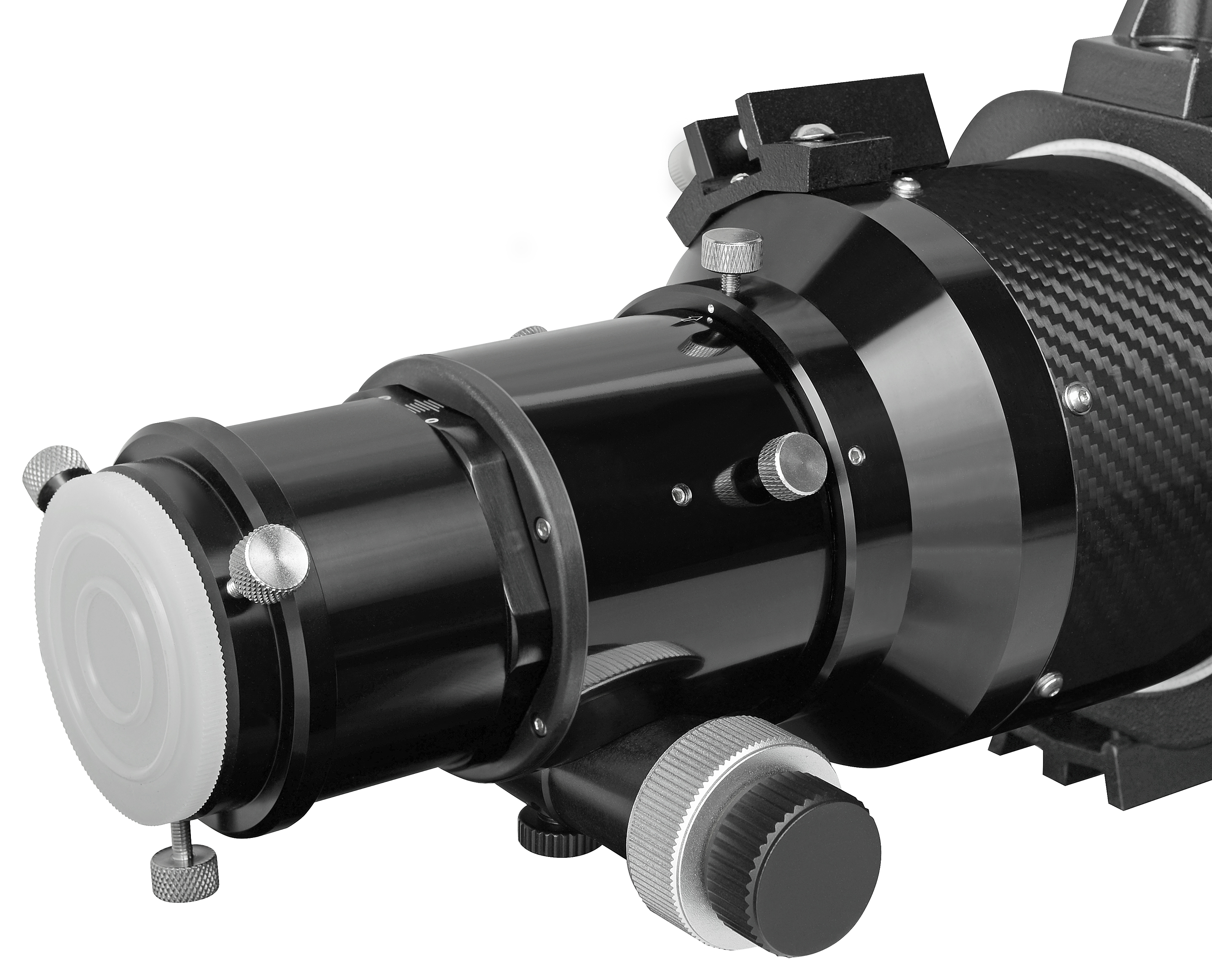

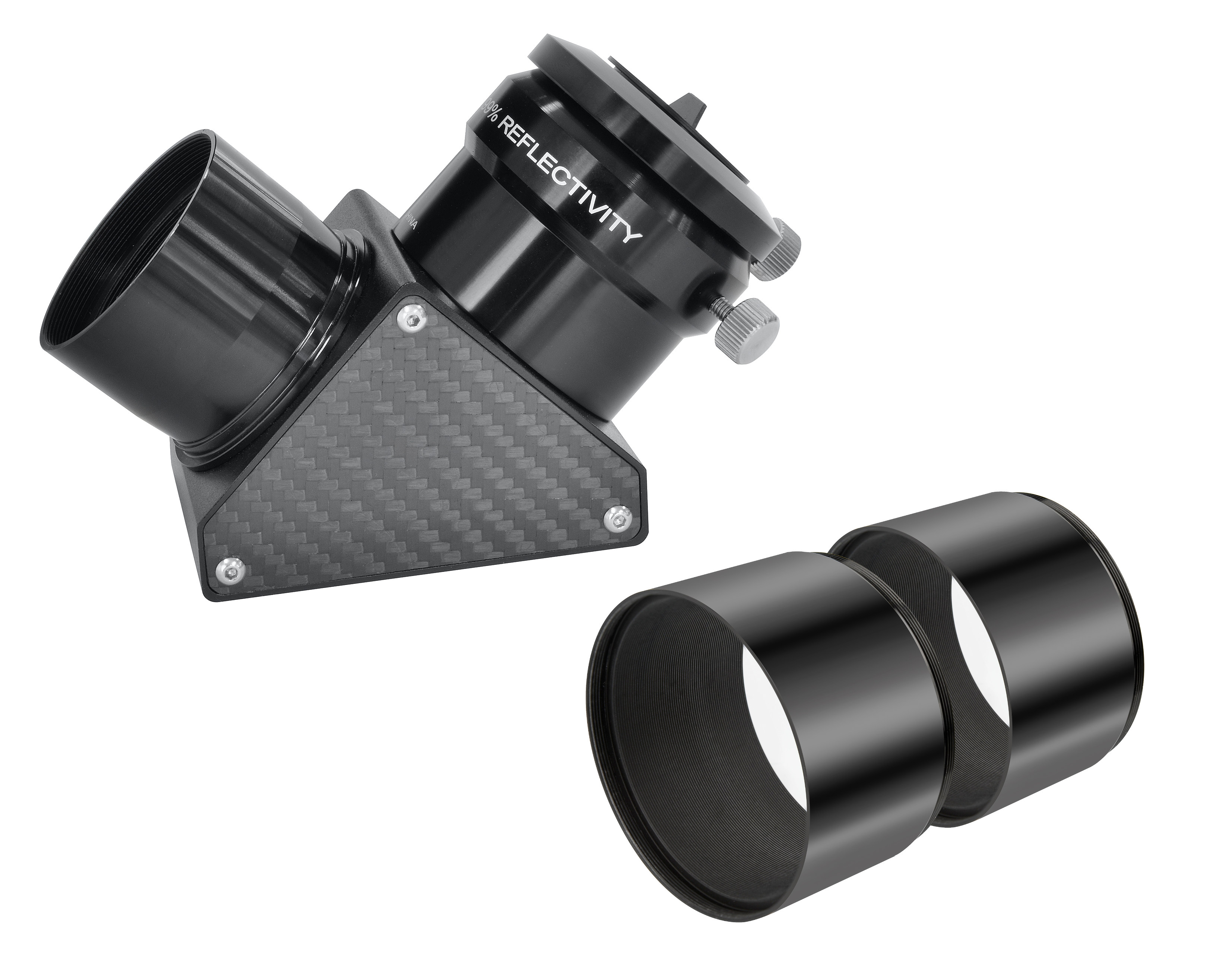
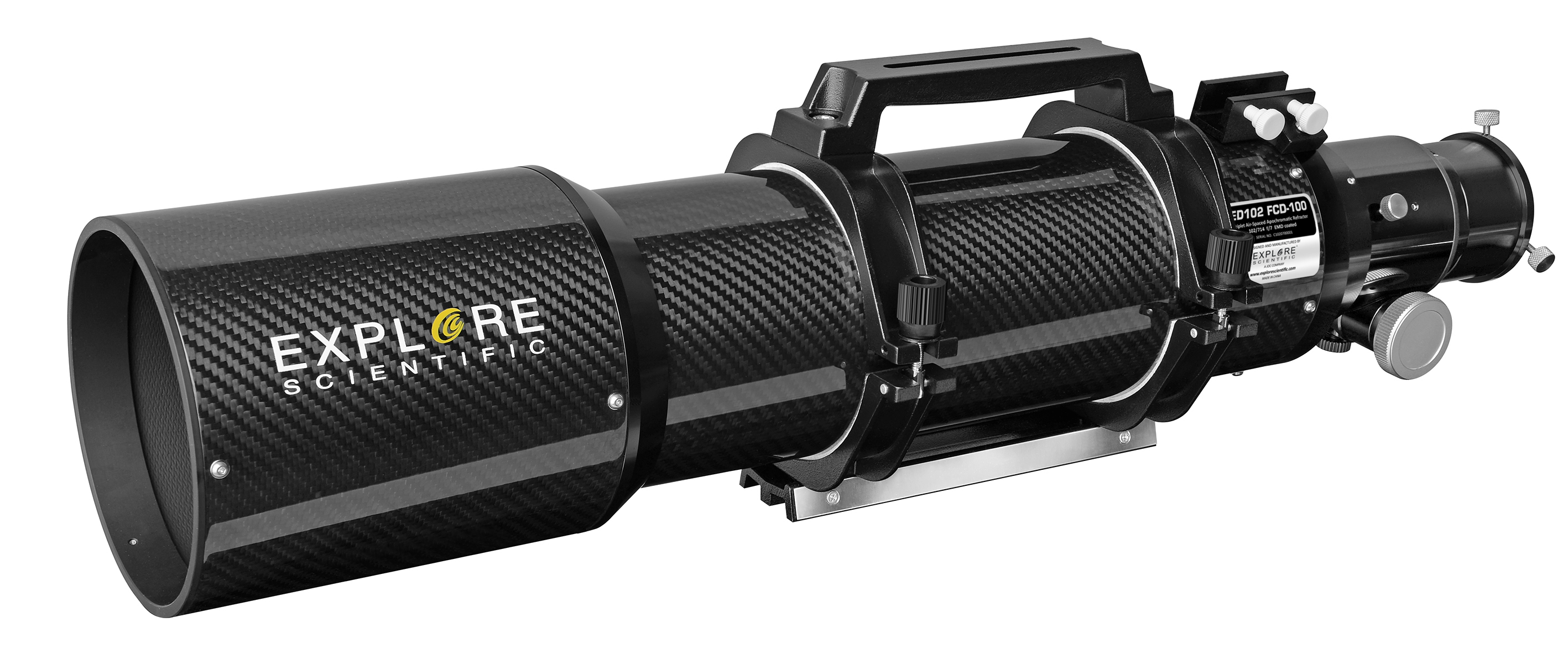















ED APO 102mm f/7 FCD-100 CF HEX
- Three lens apochromat with two air spaces
- Aperture 102mm; focal length 714mm; f/7
- HOYA FCD-100 glass for maximal color fidelity
- Weigth:3,3kg, lightweight due to carbon fiber tube
- High end 2,5" Hexafoc 10:1 DeLuxe Focuser
- 2" Star Diagonal 99% included
- Extension tubes for focusser (2pcs)
- Handle features mounting place for cameras and smartphones
- 44mm universal dovetail with stainless steel protection included (Fits Super/Great Polaris, EQ5, LXD75, EXOS-II)
- Dewshield slides onto tube for easy transport
With BRESSER, you can enjoy a smooth introduction to the vast world of astronomy. Our detailed information ("Telescope Guide") provides valuable tips for beginners— but even experienced astronomers can use the information we provide (e.g., tables for the geographical latitude of all major world cities) as a reference.
Here is the table of contents of the comprehensive BRESSER Telescope Guide:
With BRESSER, you can enjoy a smooth introduction to the vast world of astronomy. Our detailed information ("Telescope Guide") provides valuable tips for beginners—but even experienced astronomers can use the information we provide (e.g., tables for the geographical latitude of all major world cities) as a reference.
Here is the table of contents of the comprehensive BRESSER Telescope Guide:
- 2. The View into the Starry Sky
- 2.1 Observing with the Naked Eye
- 2.1.1 Observing Constellations with the Naked Eye
- 2.2 Observing with Binoculars
- 2.2.1 Observing Planets and Moons with Binoculars
- 2.2.2 Observing Deep Sky Objects with Binoculars
- 2.2.3 Every Beginning is Easy
- 2.3 Observing with a Telescope
- 2.4 The Moon
- 2.4.1 The Moon Phases
- 2.4.2 The Far Side of the Moon
- 2.4.3 The Moon Map
- 2.4.4 Maria (Seas)
- 2.4.5 Mare
- 2.4.6 Craters
- 2.4.7 The Ray Craters
- 2.5 Observing the Solar System with a Telescope
- 2.5.1 Where are the Planets?
- 2.5.2 Planet Observation
- 2.5.3 The Position of the Planets Relative to the Sun
- 2.5.4 The Planets Introduce Themselves
- 2.5.5 Deep Sky Observation with a Telescope
- 2.6 Practical Observation Tips and Tricks
- 2.6.2 Tips for Optimal Observation Conditions
- 2.7 The Most Beautiful Objects Throughout the Year
- 4. Telescopes
- 4.1 The Telescope as an Observation Instrument
- 4.2 Optics
- 4.2.1 Refractor (Lens Telescope)
- 4.2.2 Reflector (Mirror Telescope)
- 4.3 Mechanics
- 4.3.1 Altazimuth Mount
- 4.3.2 Equatorial Mount
- 4.3.3 Drive Motors
- 4.4 Accessories
- 4.4.1 Eyepieces
- 4.4.2 Important Tips for Eyepiece Selection
- 4.4.3 Filters
- 4.4.4 Photographic Accessories
- 4.4.5 Other Accessories
- 5.1 Which Telescope for Whom?
- 5.1.1 Deep-Sky Observations
- 5.1.2 Observing Closer Planets
- 5.1.3 The Topic of Portability
- 5.1.4 Price Factor When Buying a Telescope
- 6. Useful Tables
- 6.1 Table for the Geographic Latitude of All Major World Cities
- 6.1.1 Observers in the Northern Hemisphere (N):
- 6.1.2 Observers in the Southern Hemisphere (S):
- 6.2 Lookup Table for Notable Stars
- 6.3 Getting Acquainted with the Universe - or: Distances in Space
Apochromats are the ultimate choice in small to medium sized telescopes: the combination of compactness, transportability, very high image contrast and sharpness together with the possibility to make excellent astrophotos cannot be bested. The advances in glass manufacturing during the last few years have made true apochromats available to more astronomy enthusiasts than ever before. The new Explore Scientific FCD-100 CF Hex represents another major improvement in this field - the overall correction (color and spherical) is setting new standards in this price class. The optical design shows a polystrehl value of 0,97 indicating a level of correction that is absolutely top of the line.
This excellent apochromat is a very versatile telescope: the fast f-ratio makes short exposure times possible. The high contrast and sharpness of the image provide breathtaking views of large objects like the North america nebula or the Andromeda galaxy as well as tack sharp planetary images. The telescope is lightweight and compact - the dew shield slides down the tube to minimize size for transportation. Revolutionary glass and precision manufacturing created a telescope that offers observing joy on the highest level. This does not only qualify this telescope as the ideal travel scope, it is also the perfect choice for fast observations and for astrophotography. The excellent 2,5" HEXAFOC focuser with 10:1 reduction is perfect for this - the large inner diameter of 65mm prevents vignetting by the focuser when the telescope is used for astrophotography with large sensors.
These very popular EXPLORE SCIENTIFIC Triplet ED APO Refractors we do offer in 3 different product lines:
Essential Line:
HOYA FCD-1 Glass lens, AL-Tube, 2.0" Rack&Pinion Focusser with 1:10, 2.0" Star Diagonal 99% Reflectivity (see Part No. 0112084(AL), 0112106(AL), 0112132(AL)), 0112155(CF + 3"FT))
Professional Line:
HOYA FCD-100 Glas lens, AL/CF-Tube, 2.5" HEXAFOC Focusser with 1:10, 2.0" Star Diagonal 99% Reflectivity (see Part No. 0112086(AL), 0112108(AL), 0112109(CF), 0112134(AL), 0112135(CF))
High-End Line:
OHARA FPL-53 Glass lens, Carbon(CF) Tube, 3.0" Feather-Touch Focusser with 1:10, 2.0" Star Diagonal 99% Reflectivity (see Part No. 0112165(CF))
SPECIFICATIONS
- Aperture: 102mm
- Focal Length: 714mm
- Focal ratio: f/7.0
- Design: Apochromat with three lenses, two air spaces and FCD-100 glass
- Weigth: 3,3kg , lightweight due to carbon fiber tube
- Backfocus: 150mm above 2" adaptor
- Design: Apochromat with three lenses, two air spaces and FCD-100 glass
- Optical tube with retractable dew-shield
- 2.5" HEX focuser with 1:10 gear reduction
- 2" Star Diagonal 99% reflectivity
- Tube rings with dovetail plate and handle
- Extension tubes for focusser (2pcs)
- Dust caps for front-lens and focuser
- Universal finder slot
| Colour: | Carbon Fiber |
|---|---|
| Focus Group [Telescopes]: | Advanced Amateurs, Specialists and Research, Visual enthusiasts |
| Focusing system: | 2.5" Hexafoc DeLuxe with 10:1 |
| Material: | Carbon fibre |
| Material front lens or corrector plate: | HOYA FCD-100 |
| Mount Type [Telescopes]: | Optics without Mount |
| Optical design: | Apochomatic Refractor |
| Product Family [Telescopes]: | Refractor telescope |
| Type of coating: | Enhanced Multilayer Desposition (EMD) |
Accessories
Similar products
Customers also viewed


